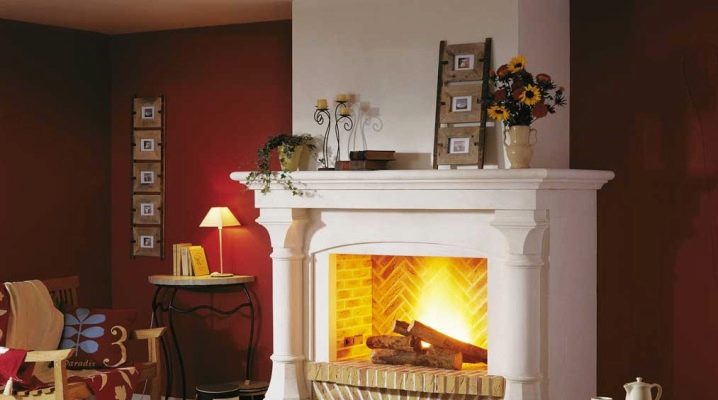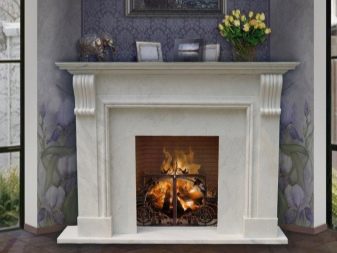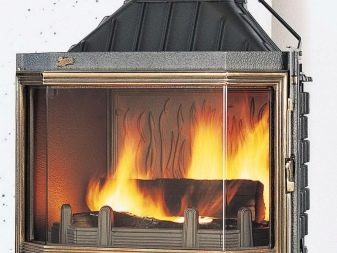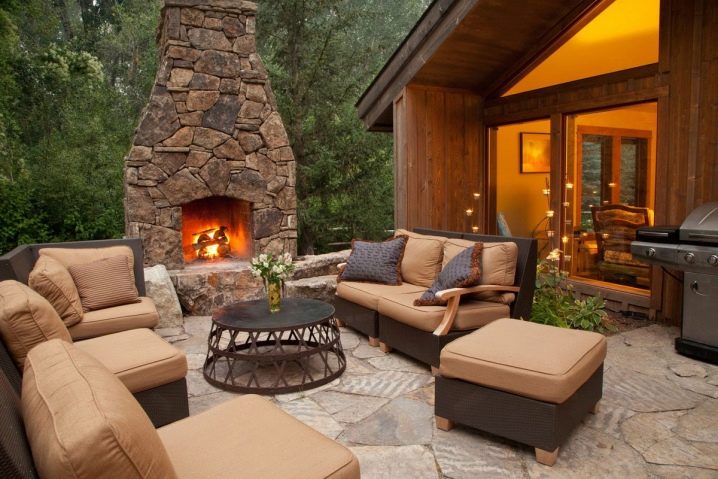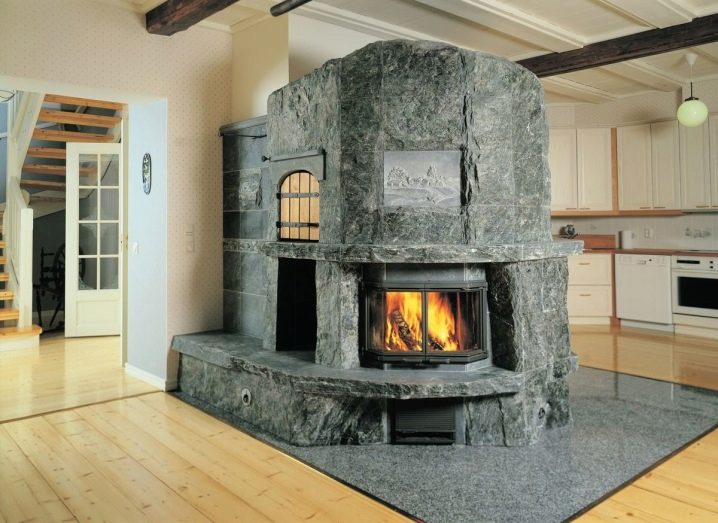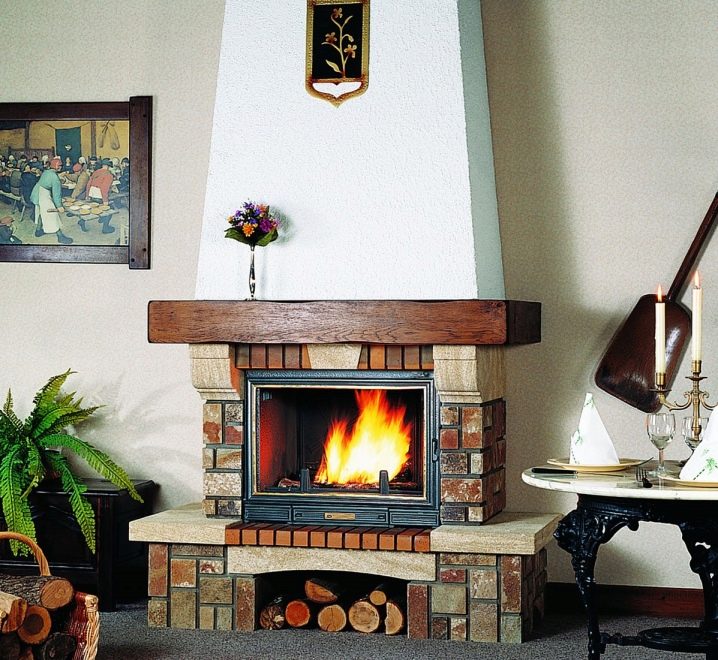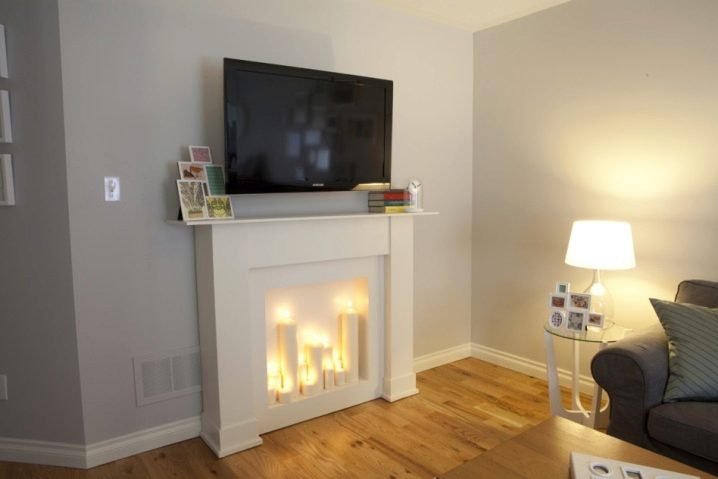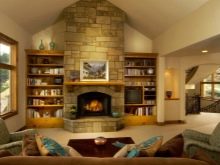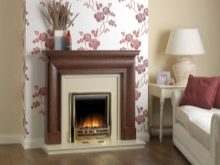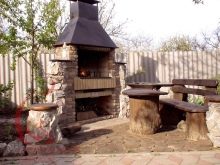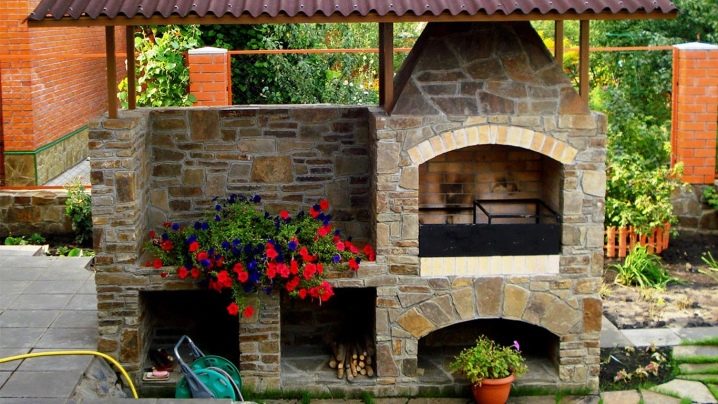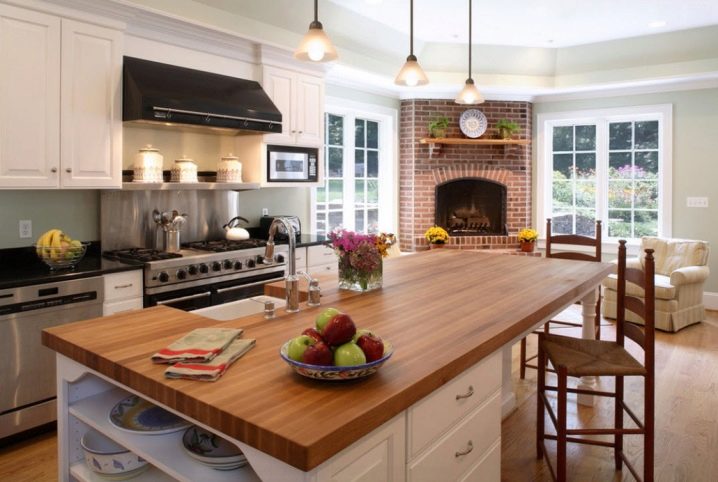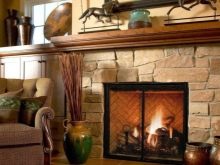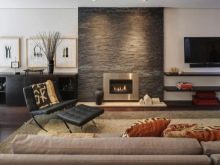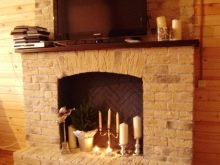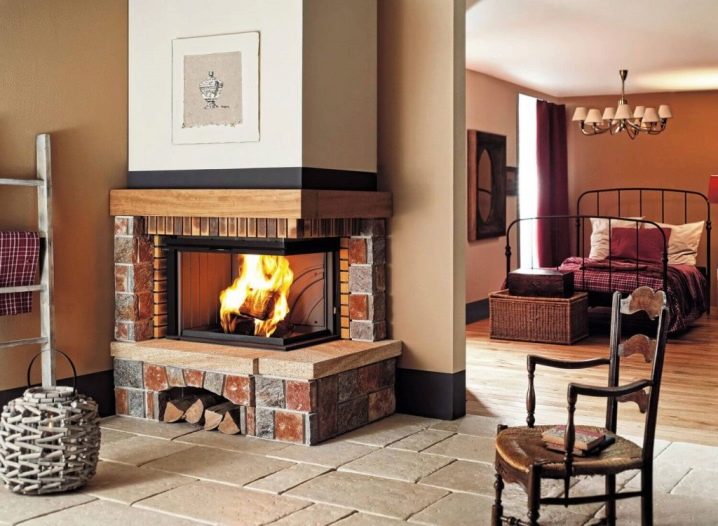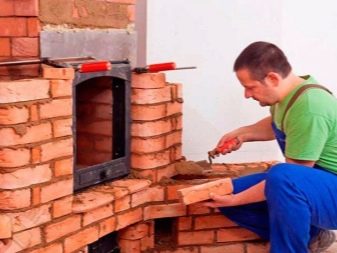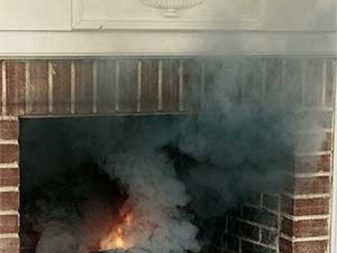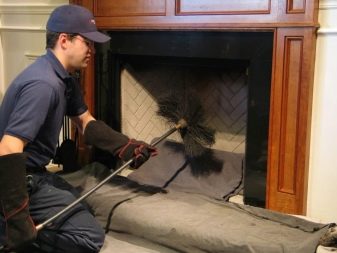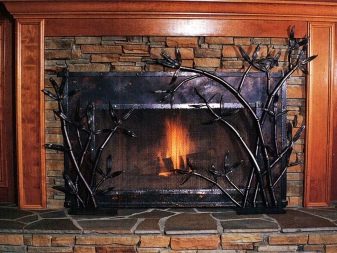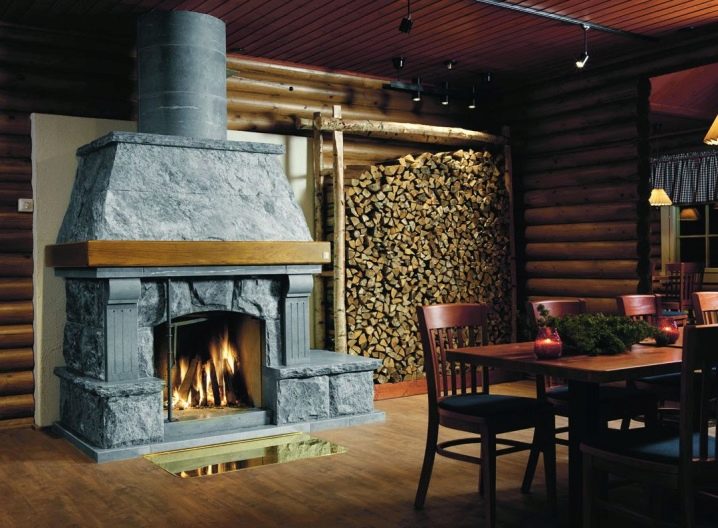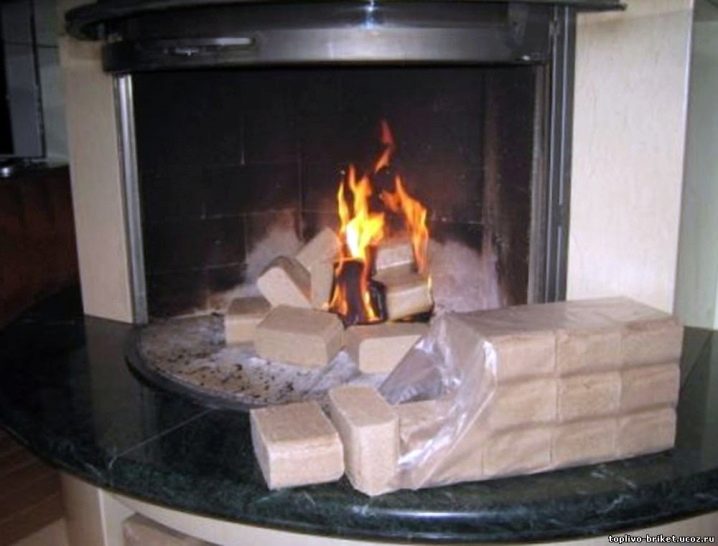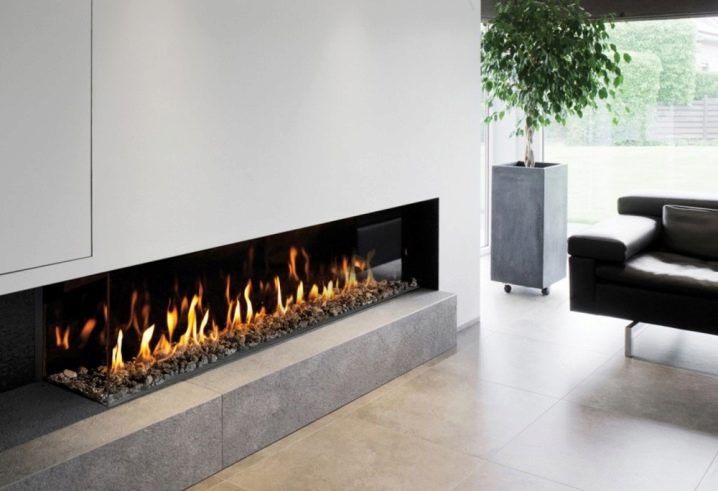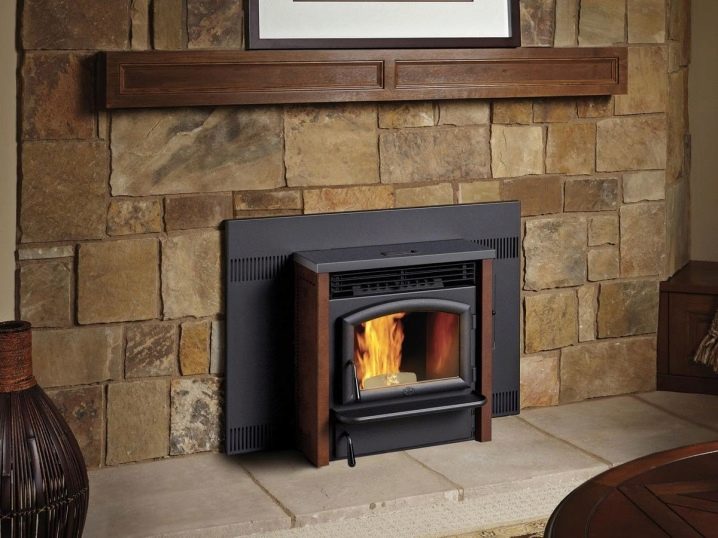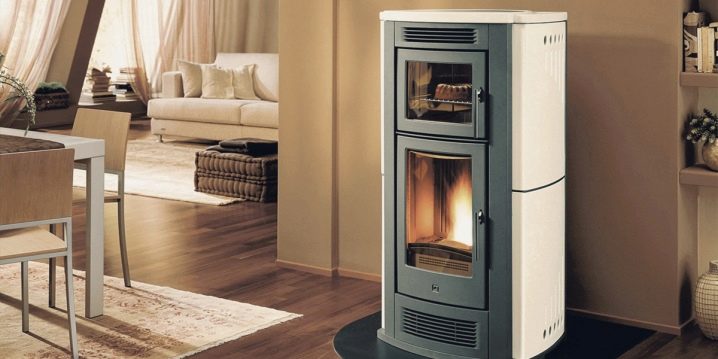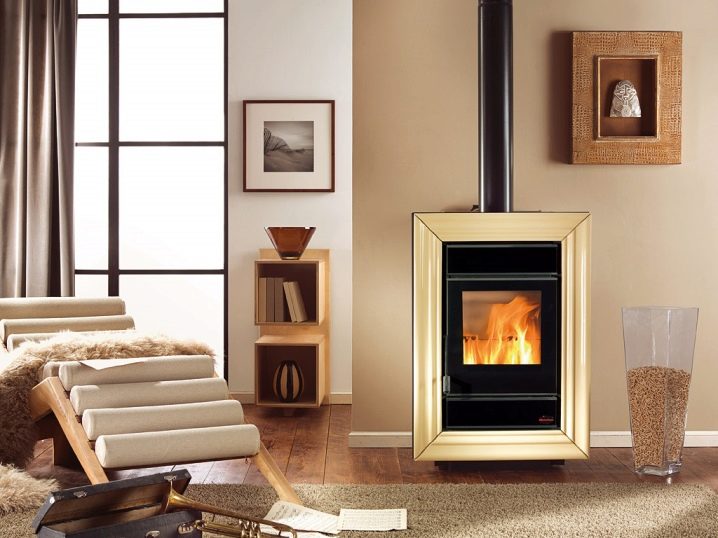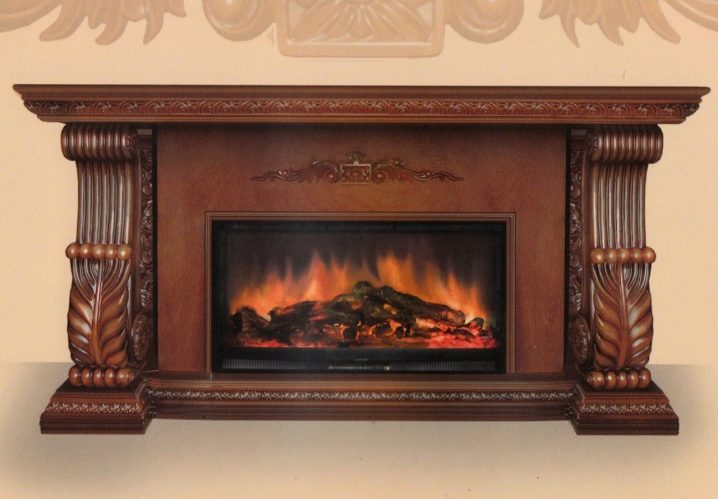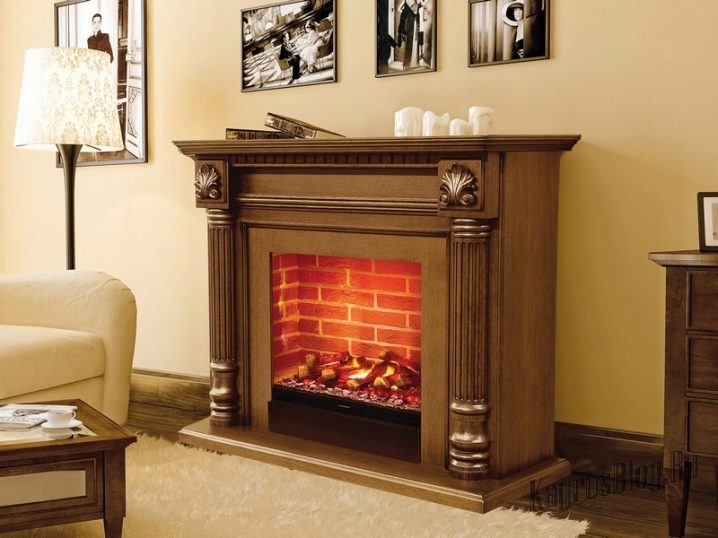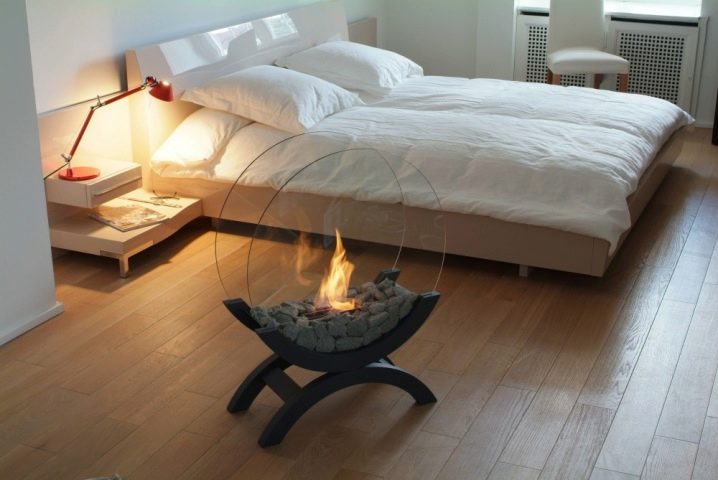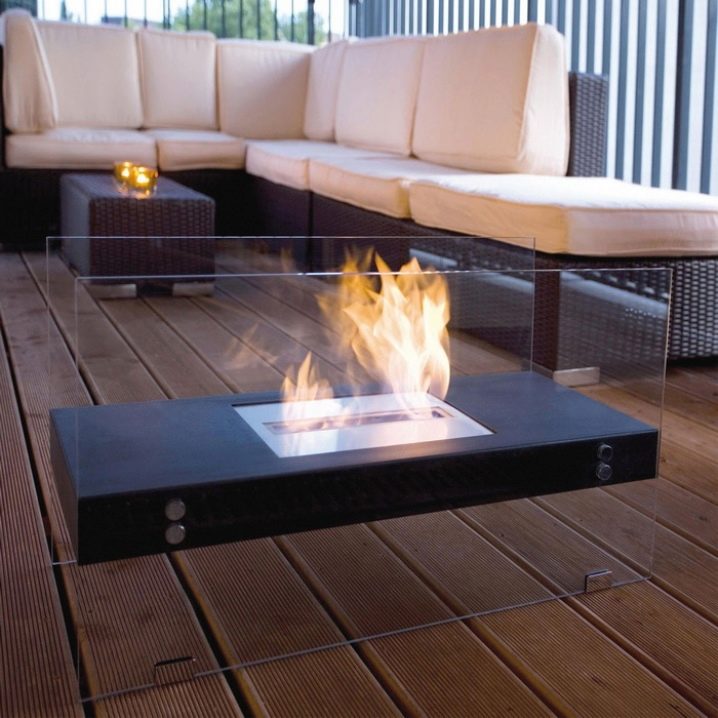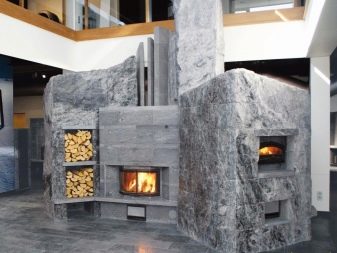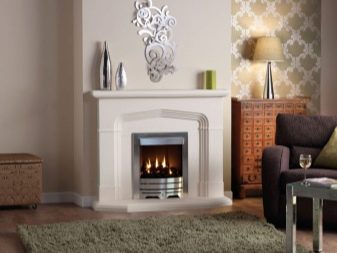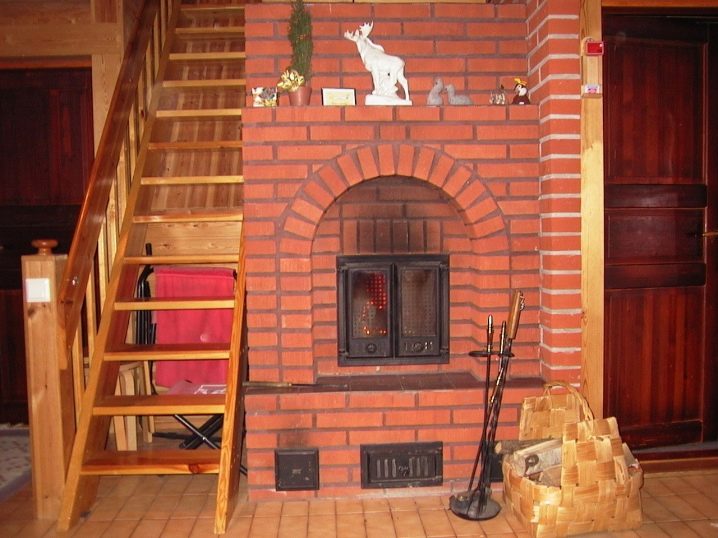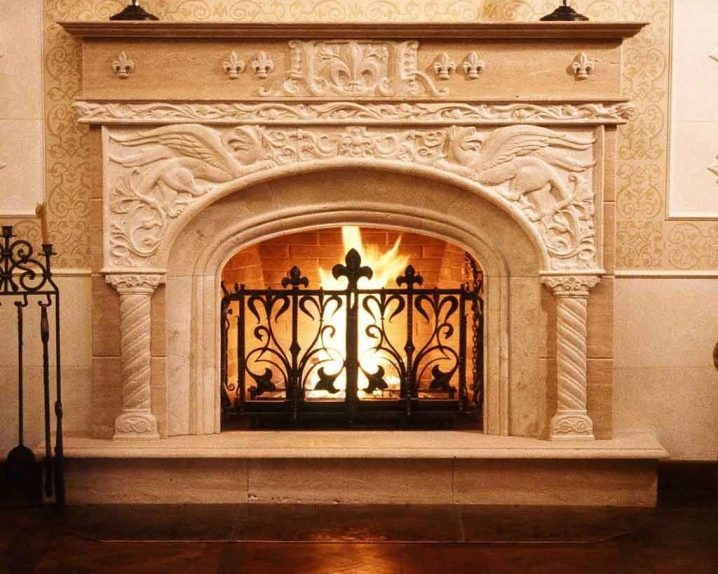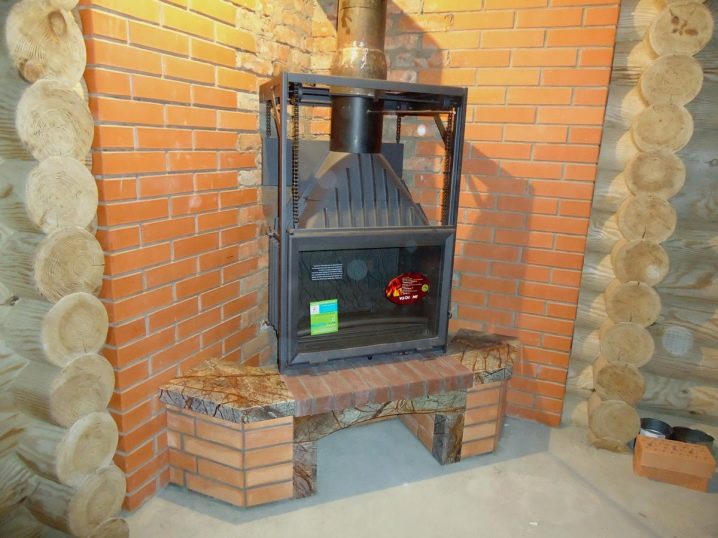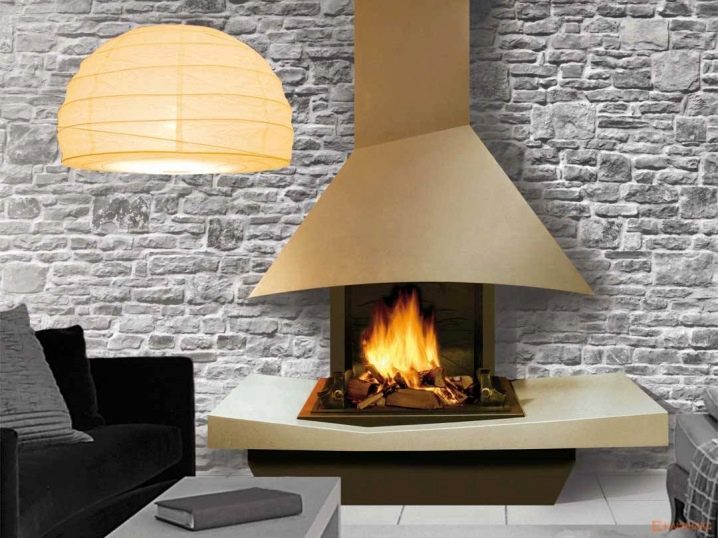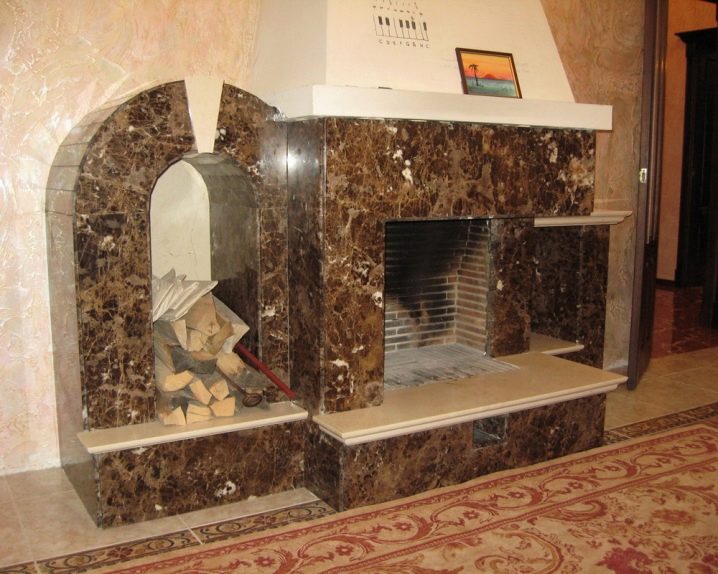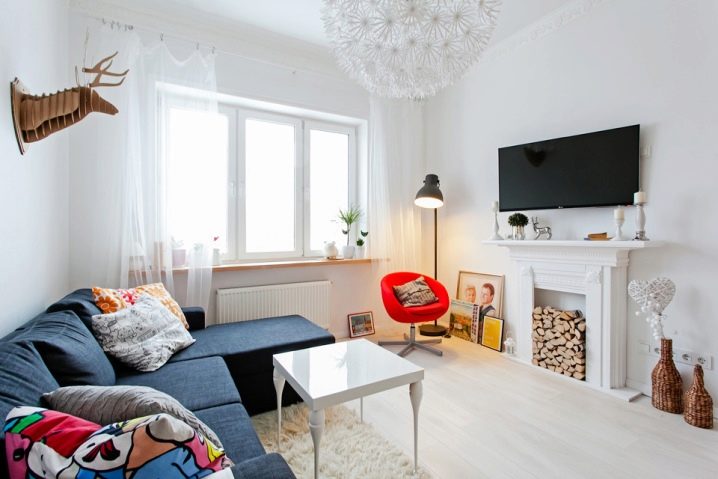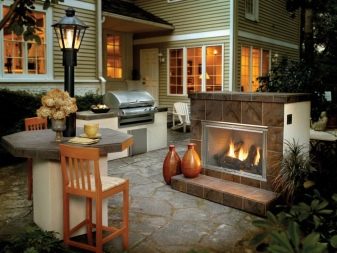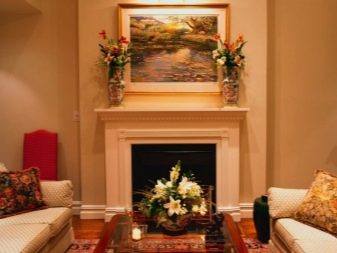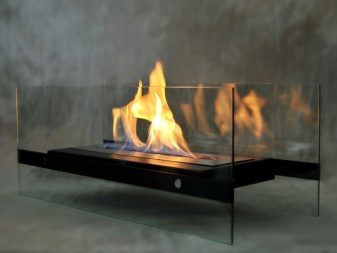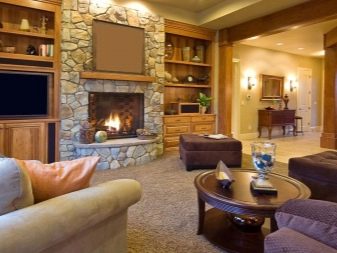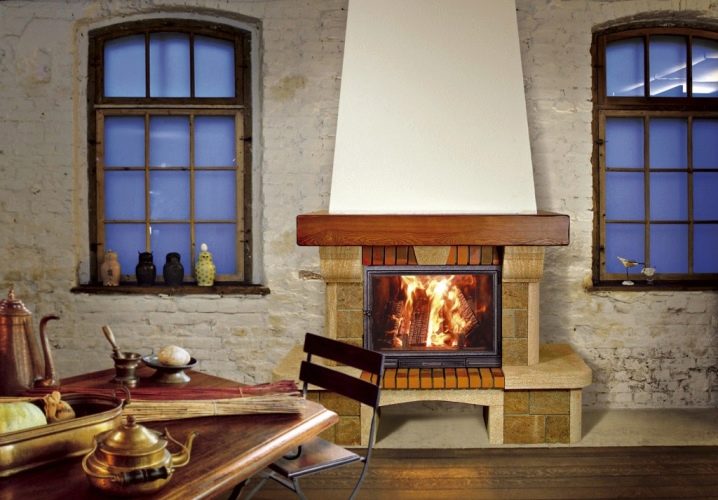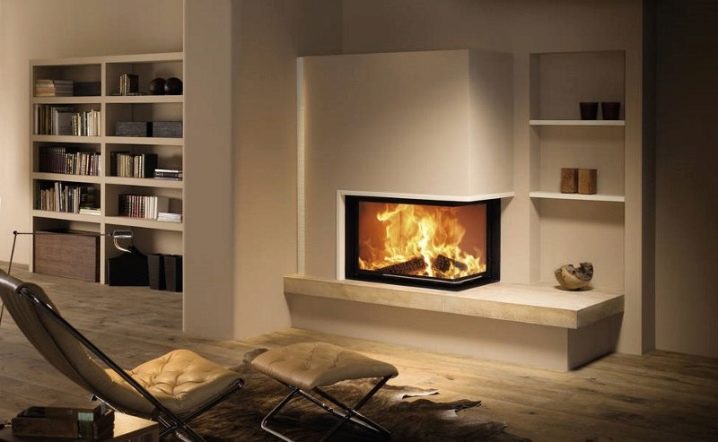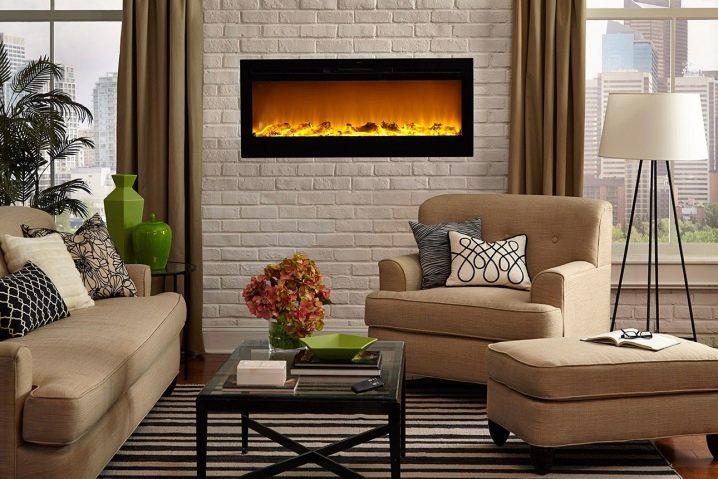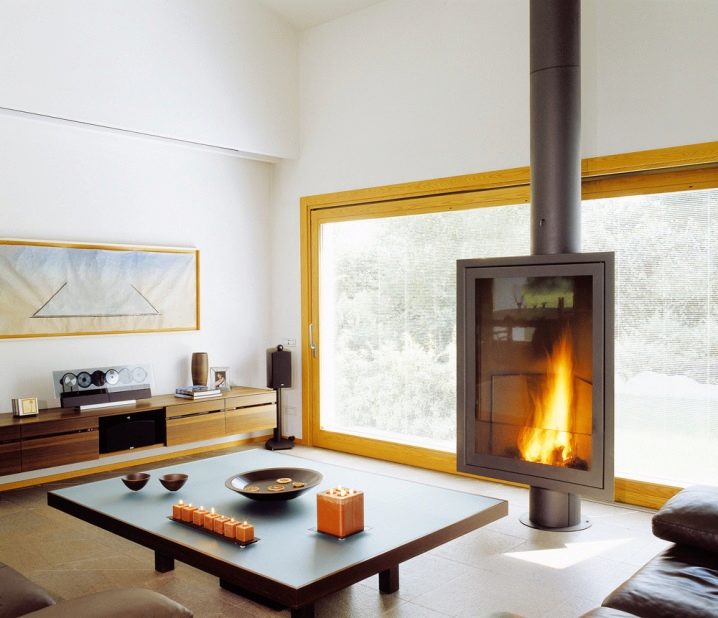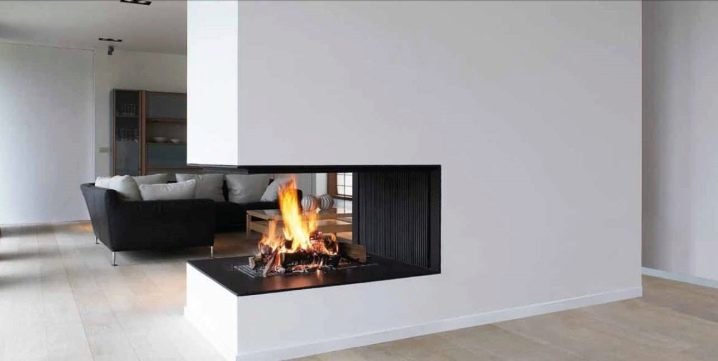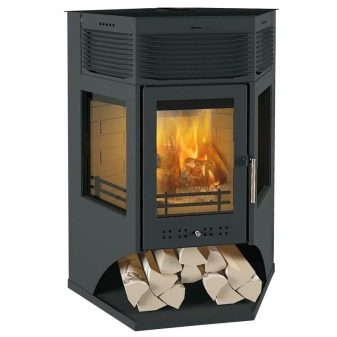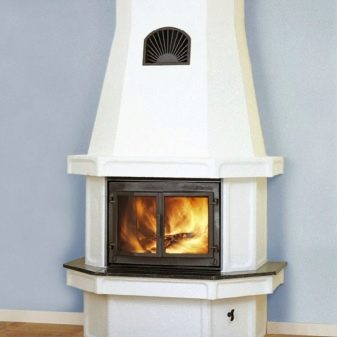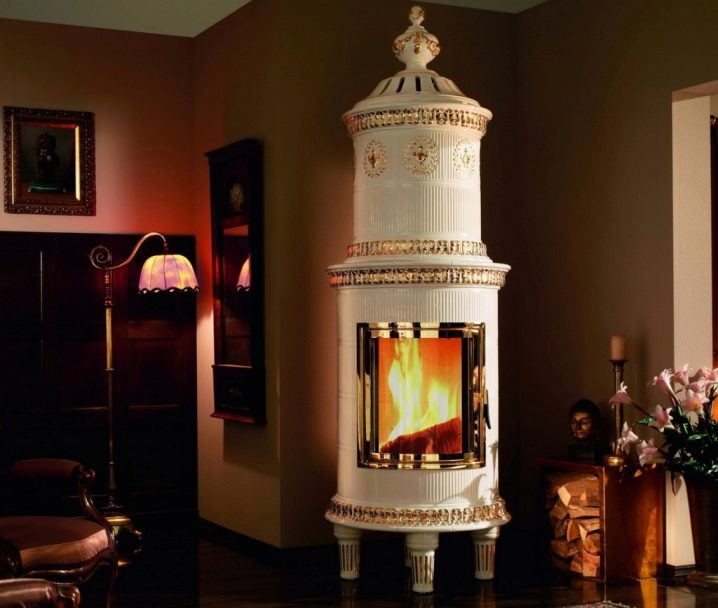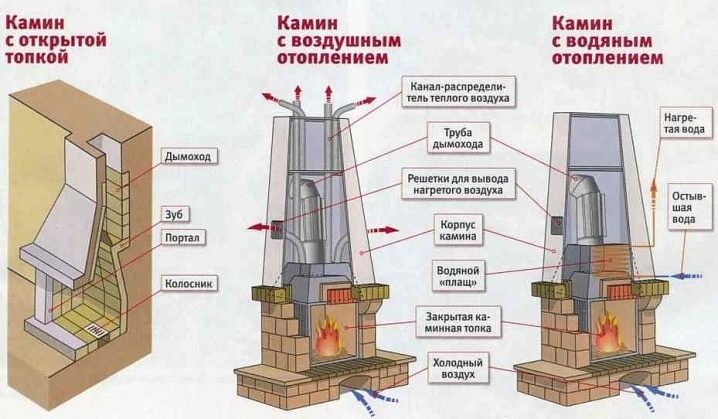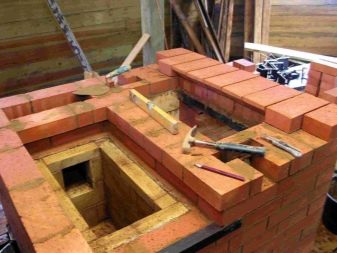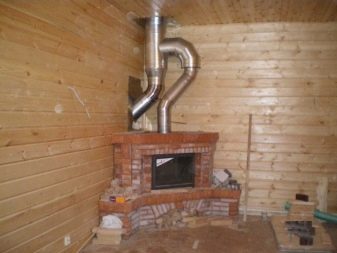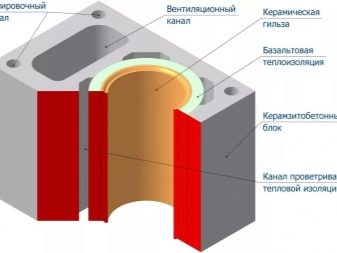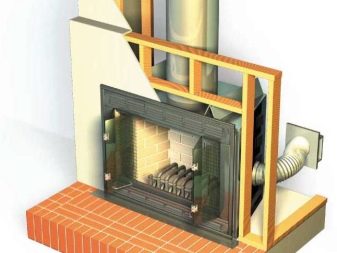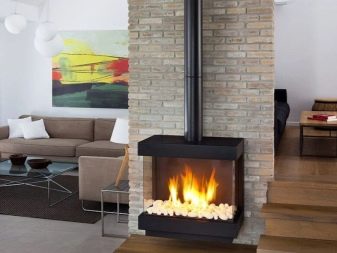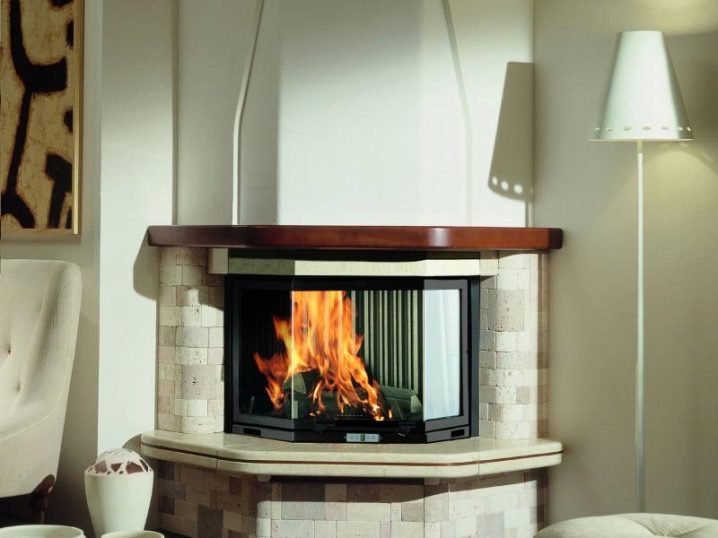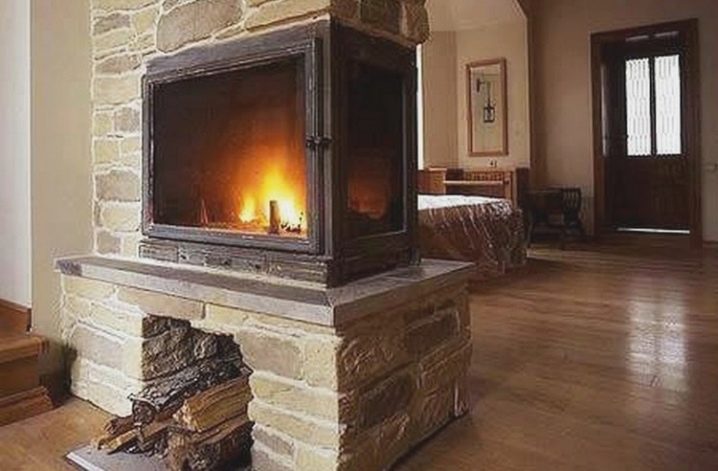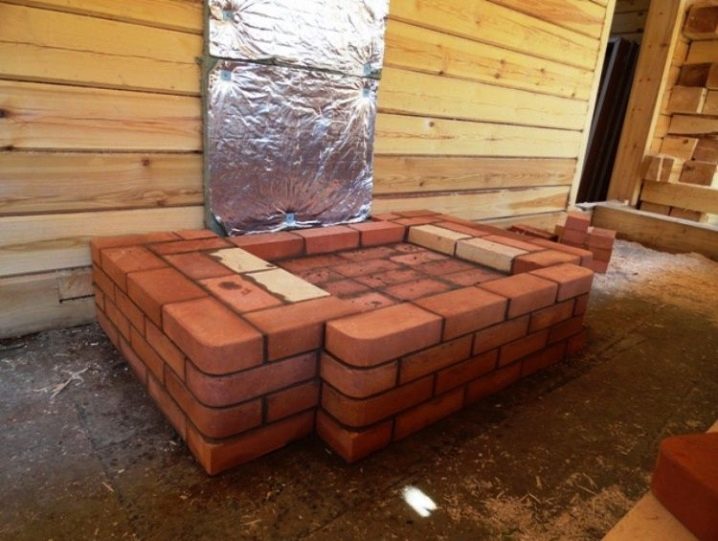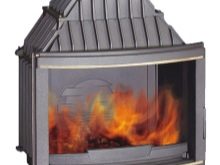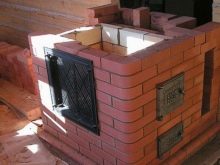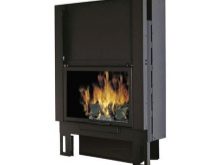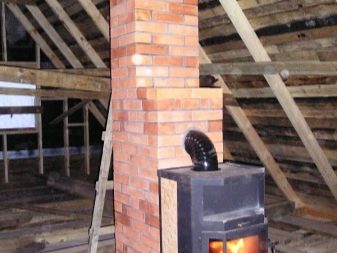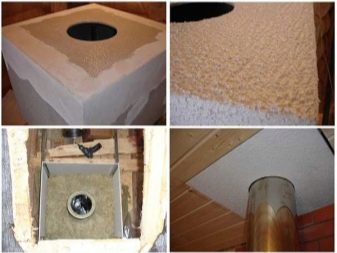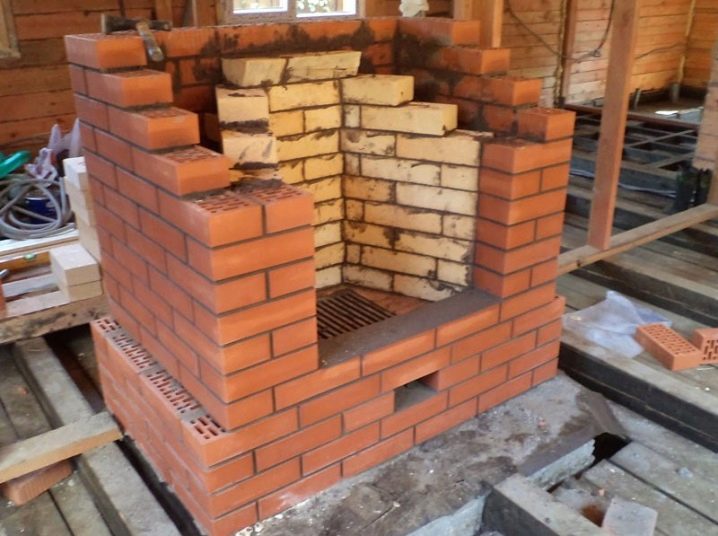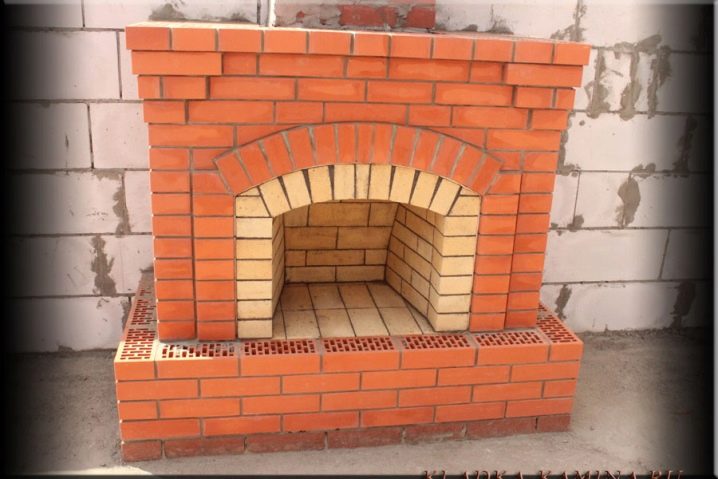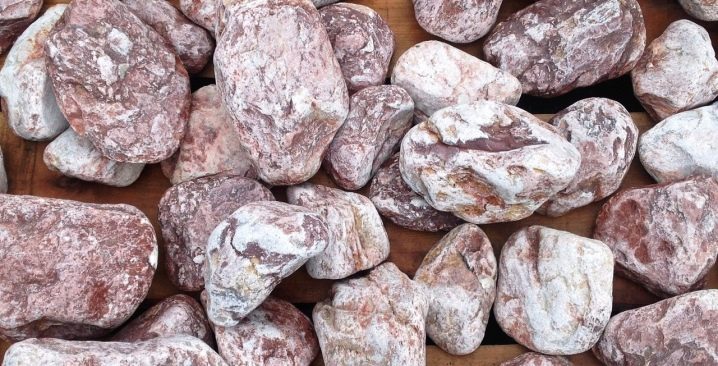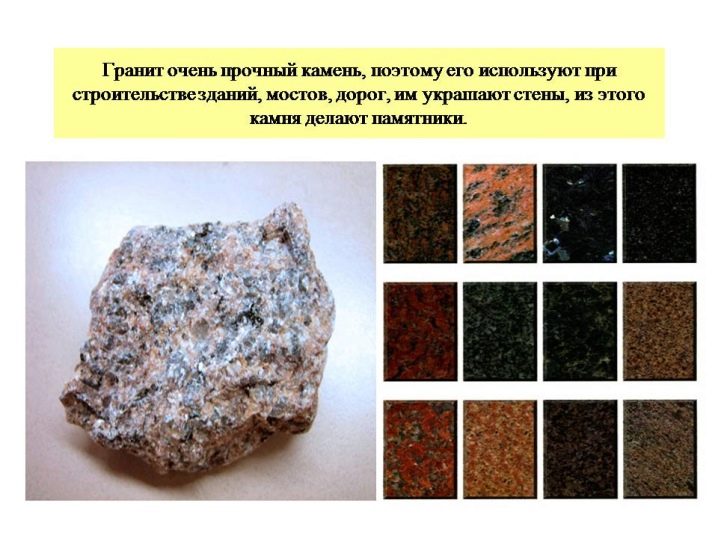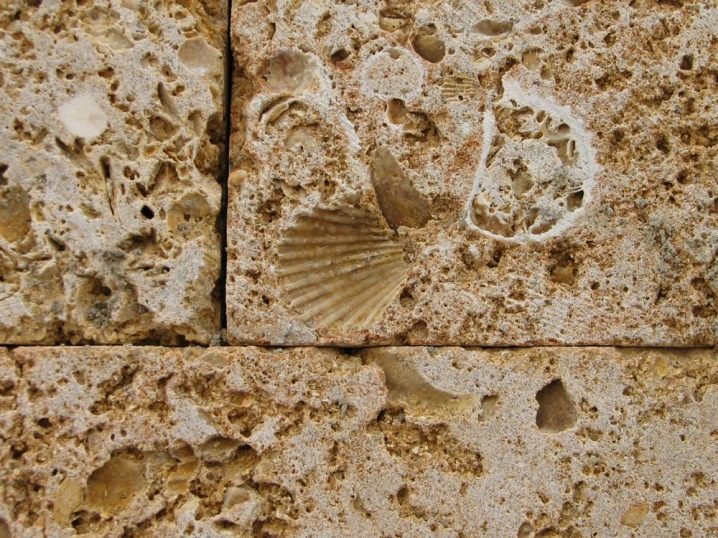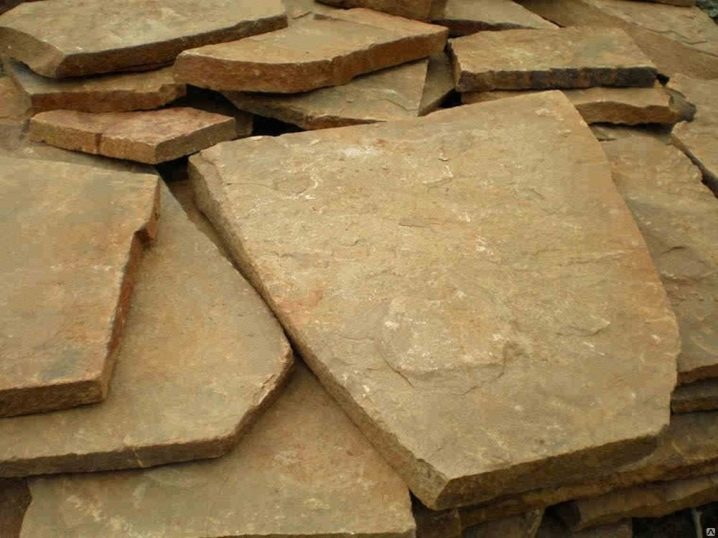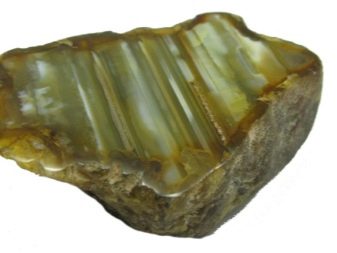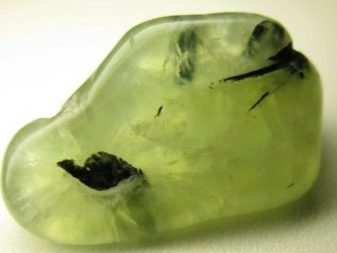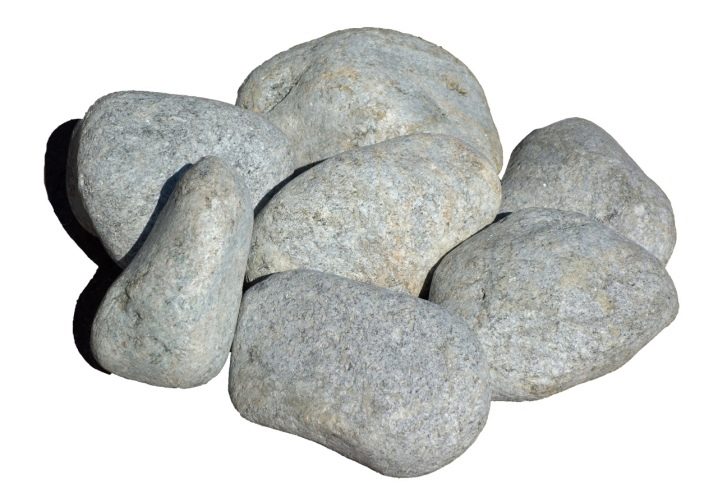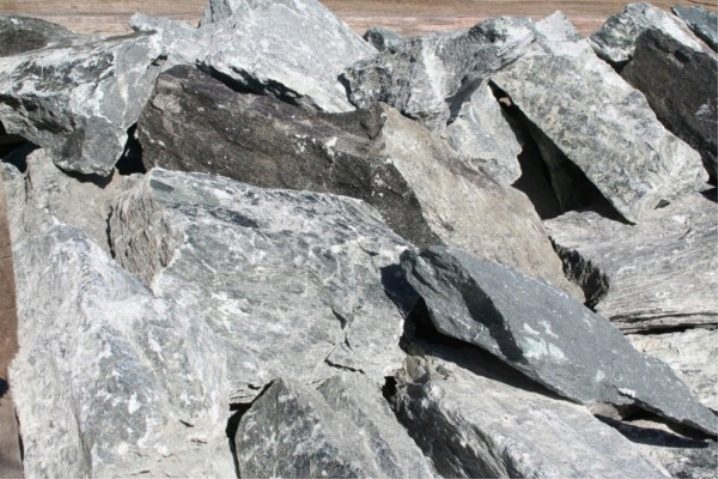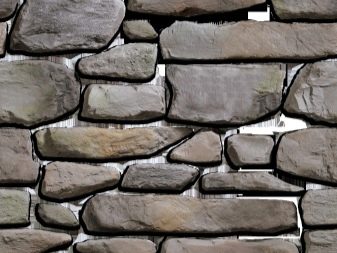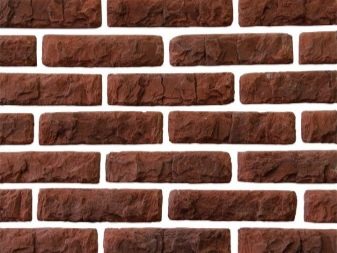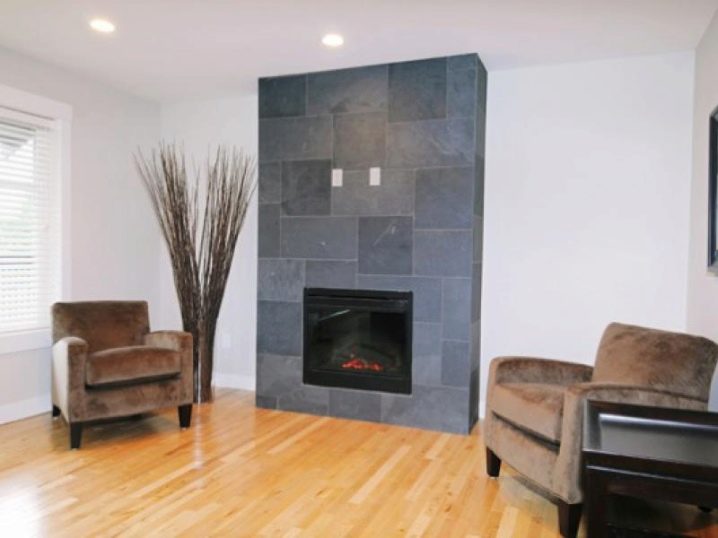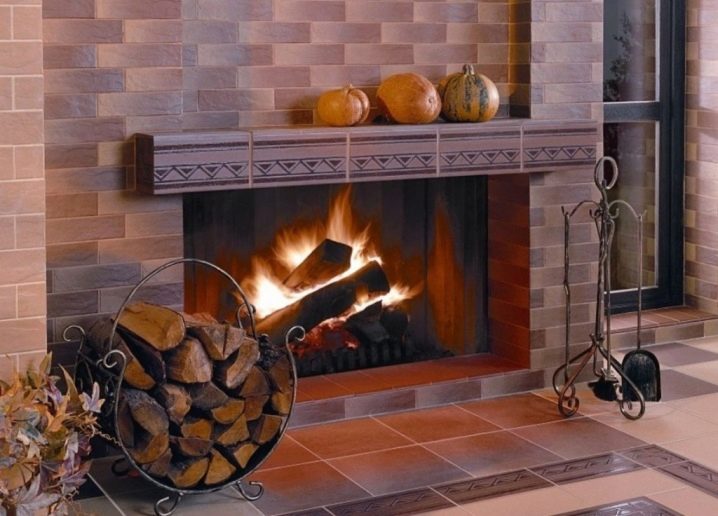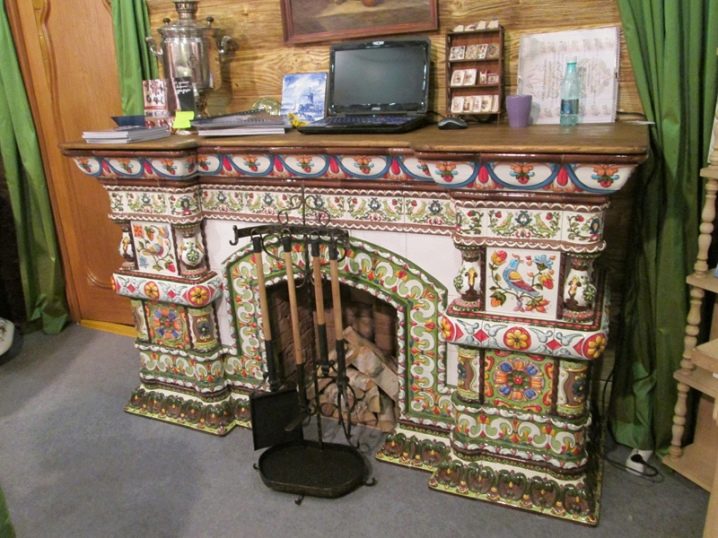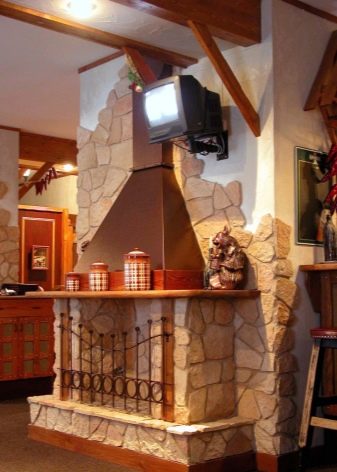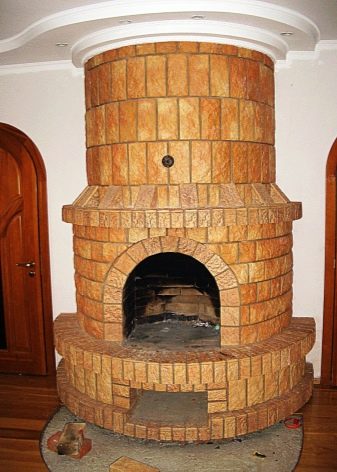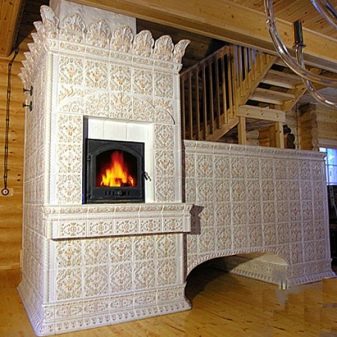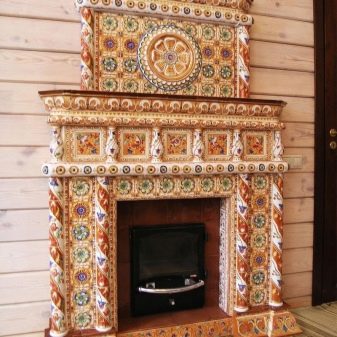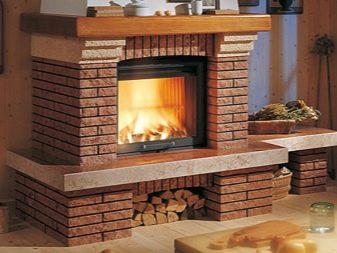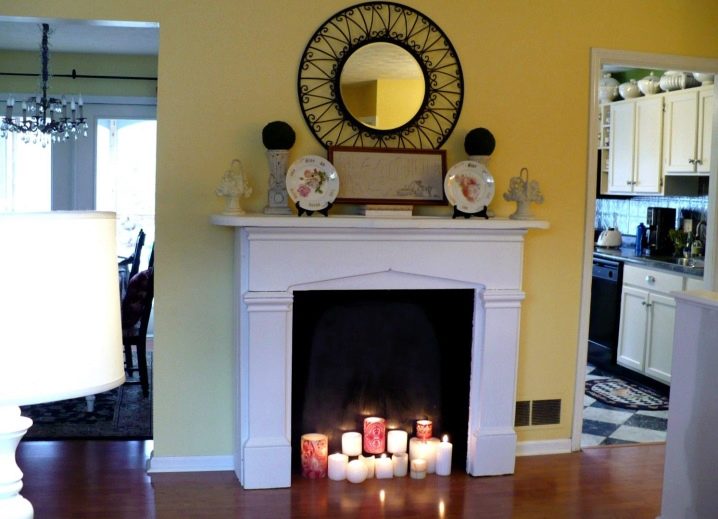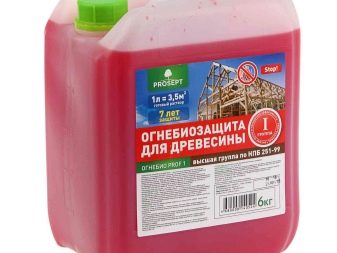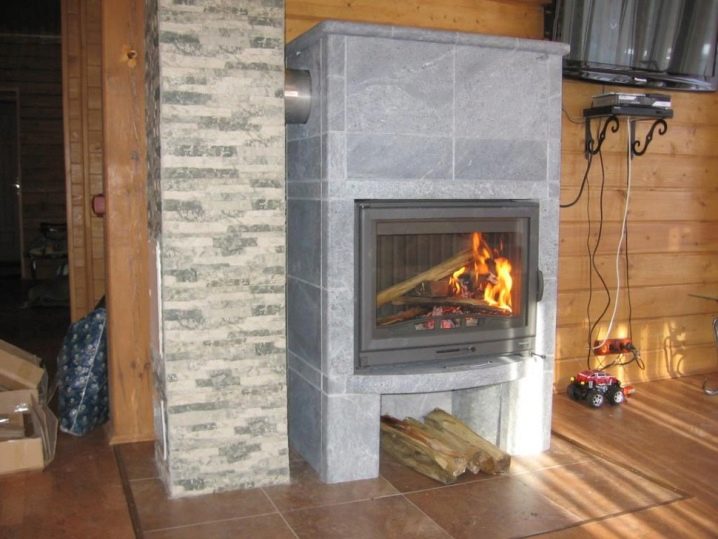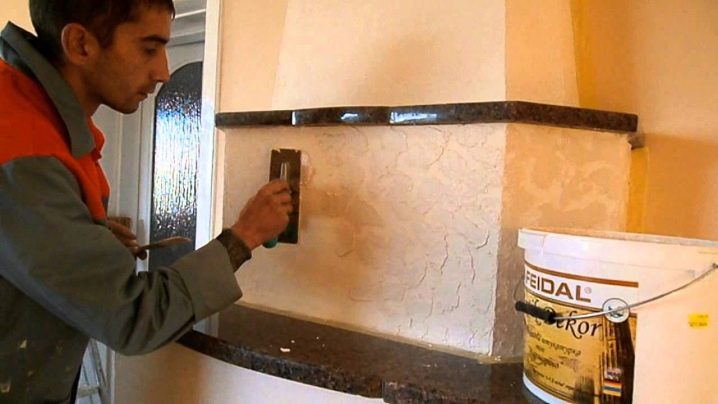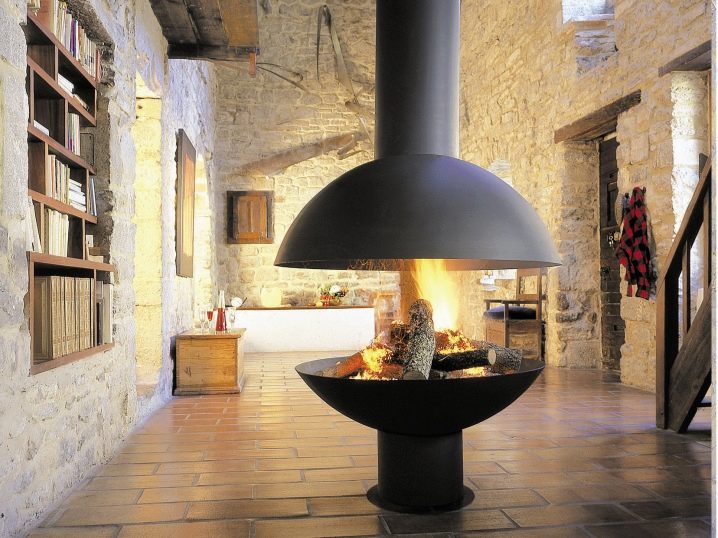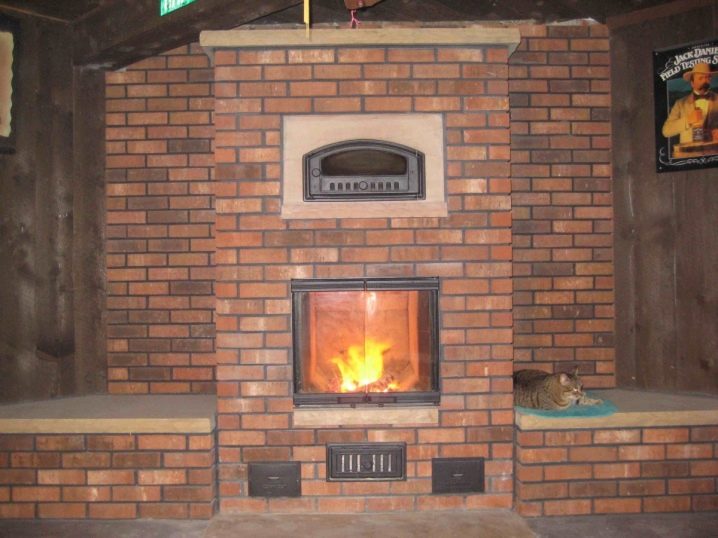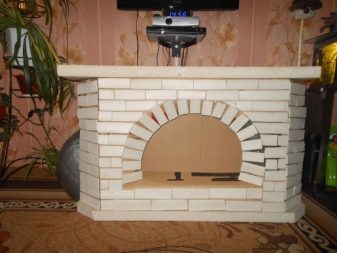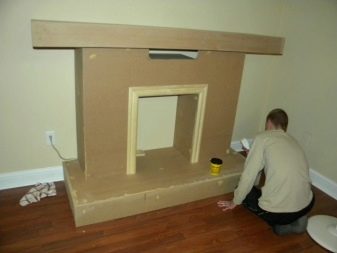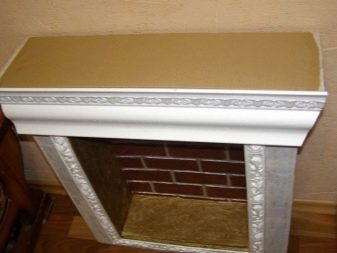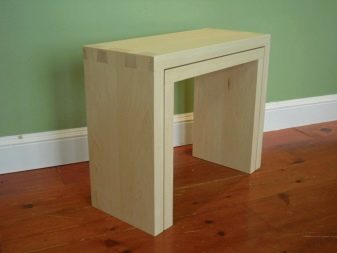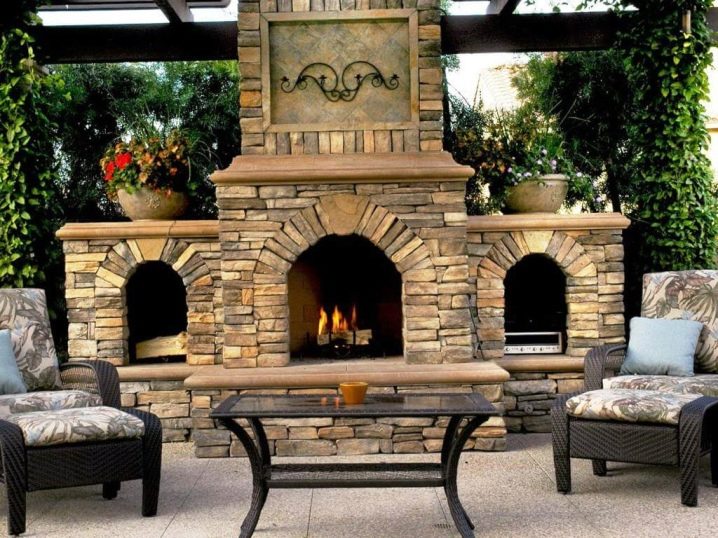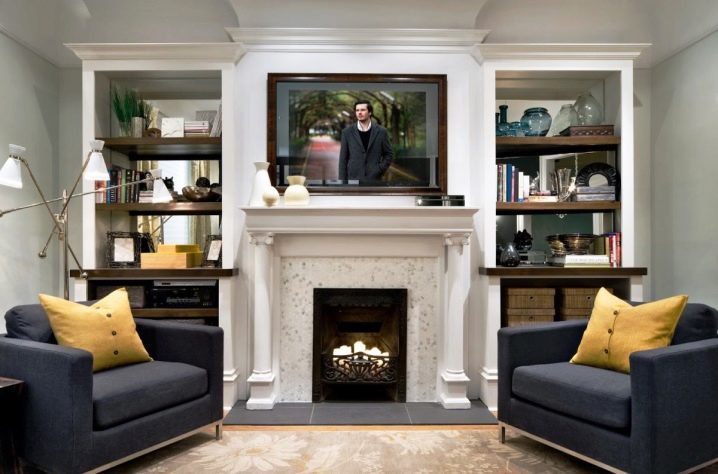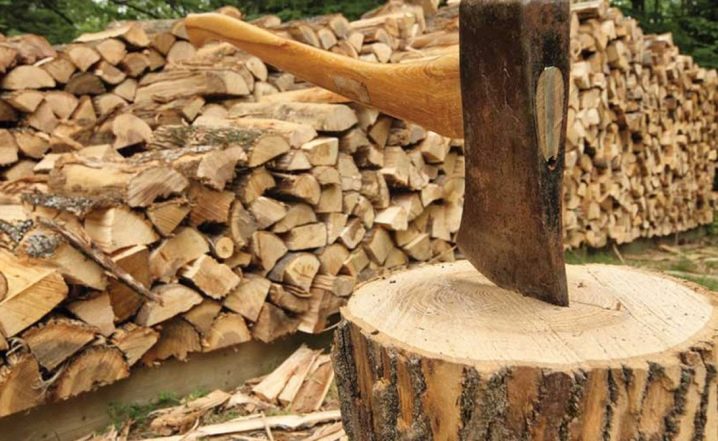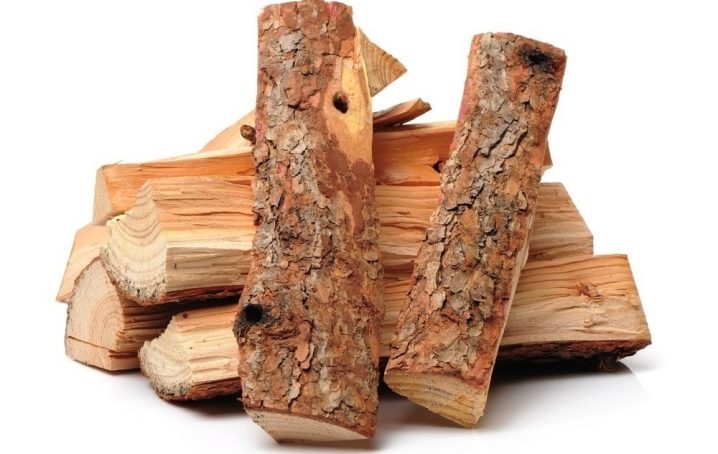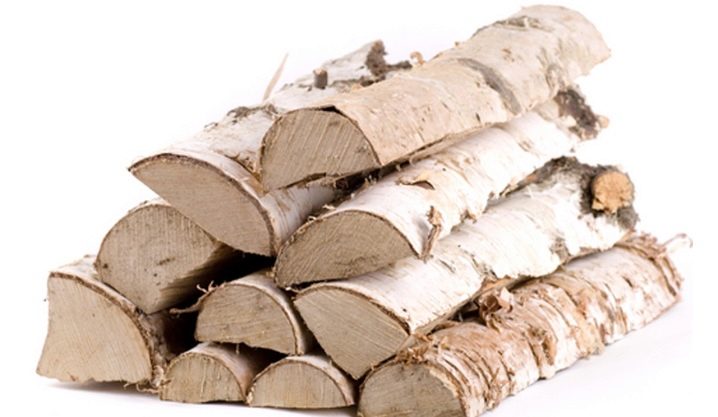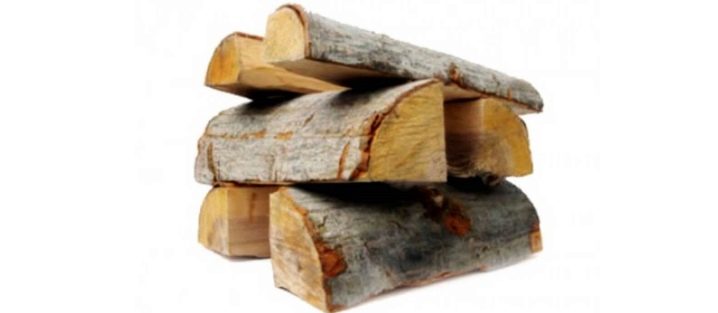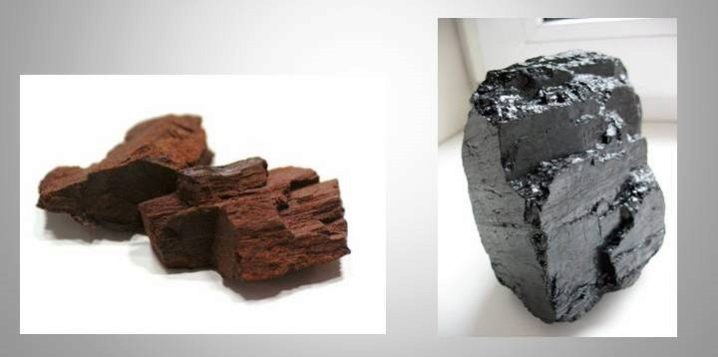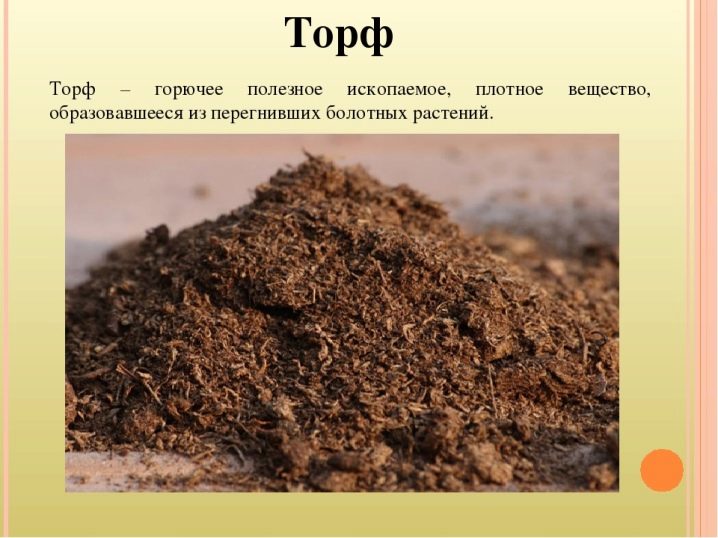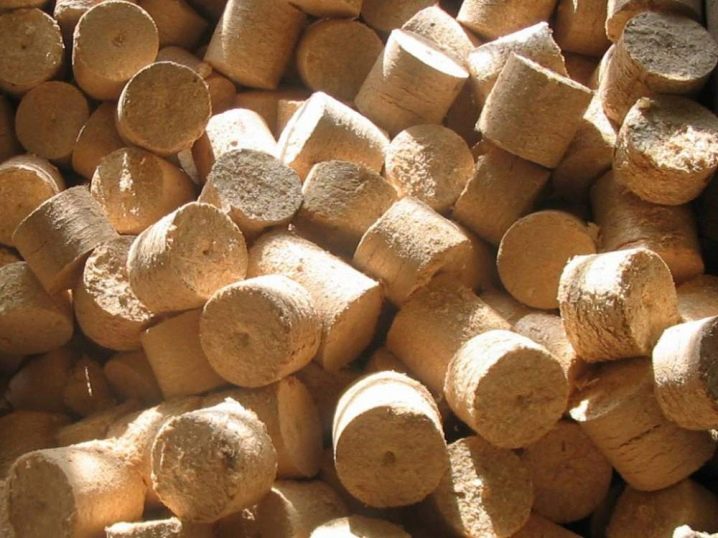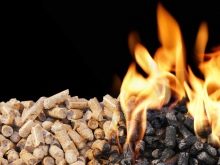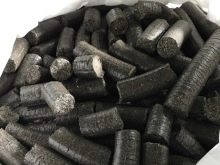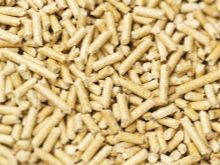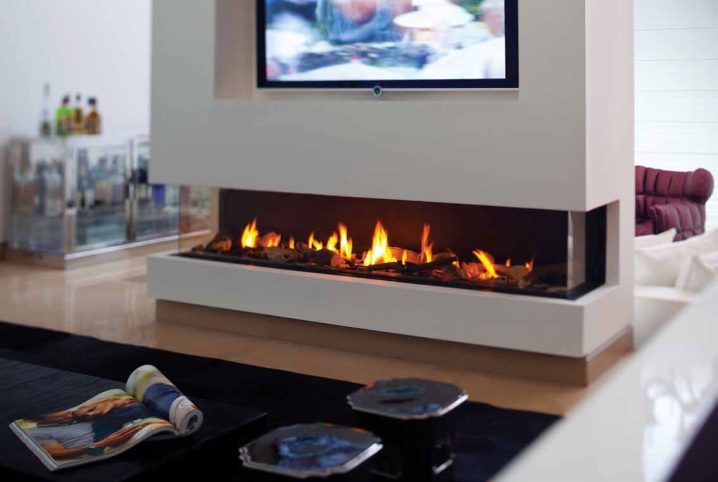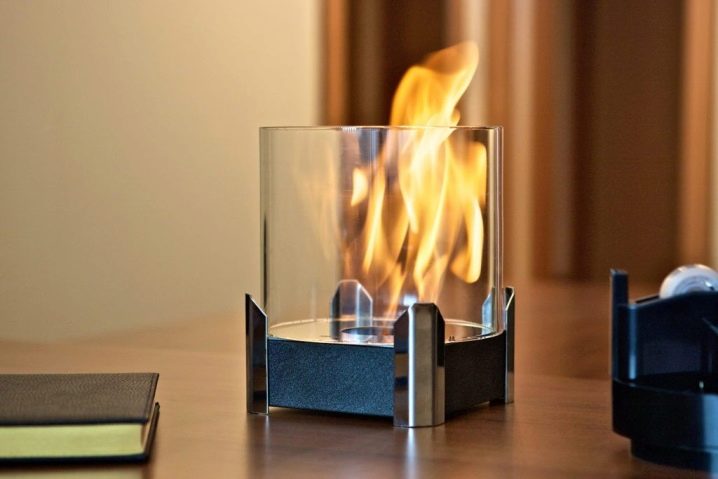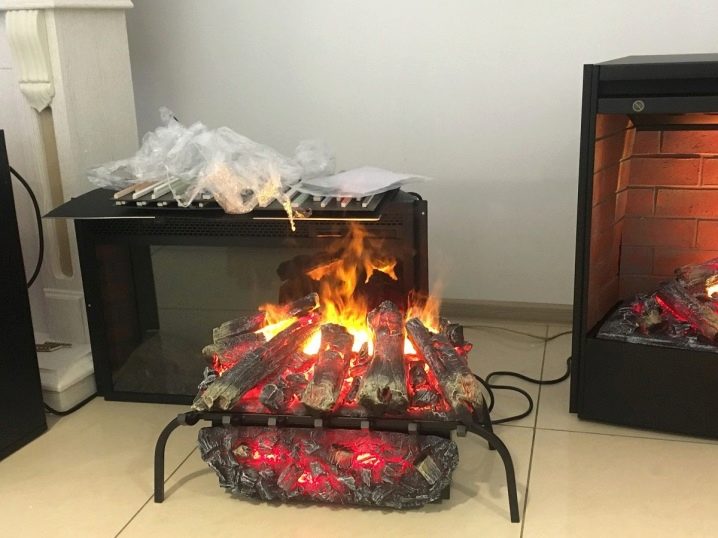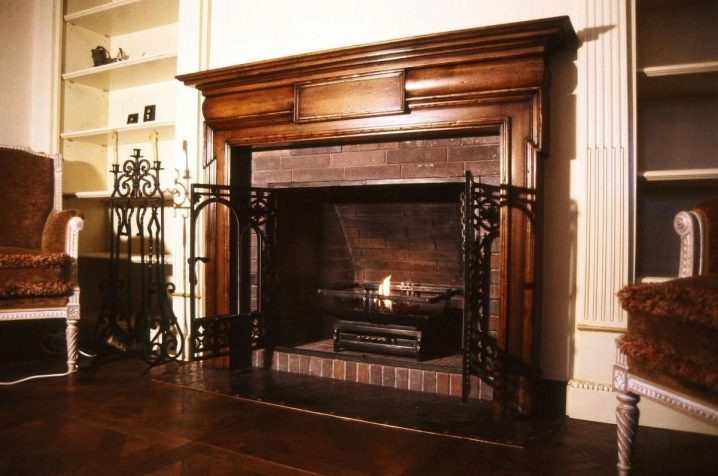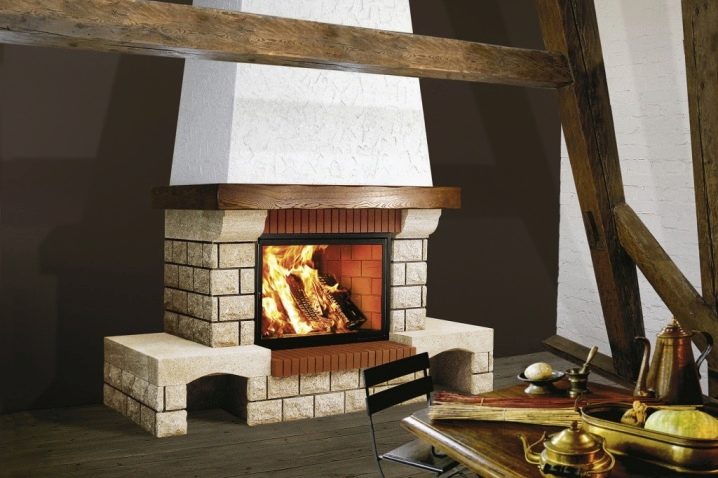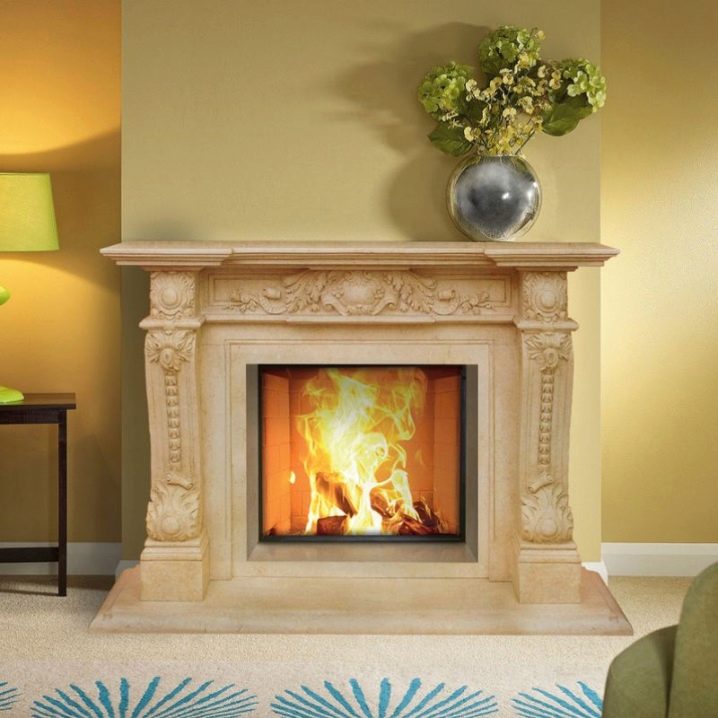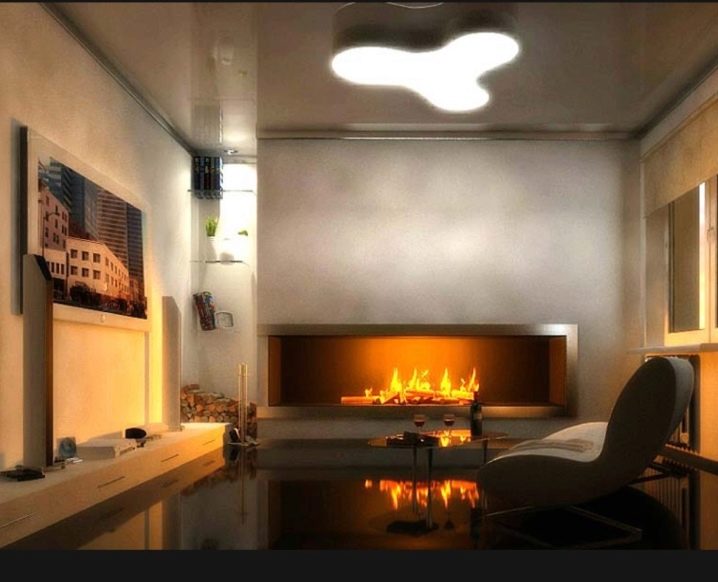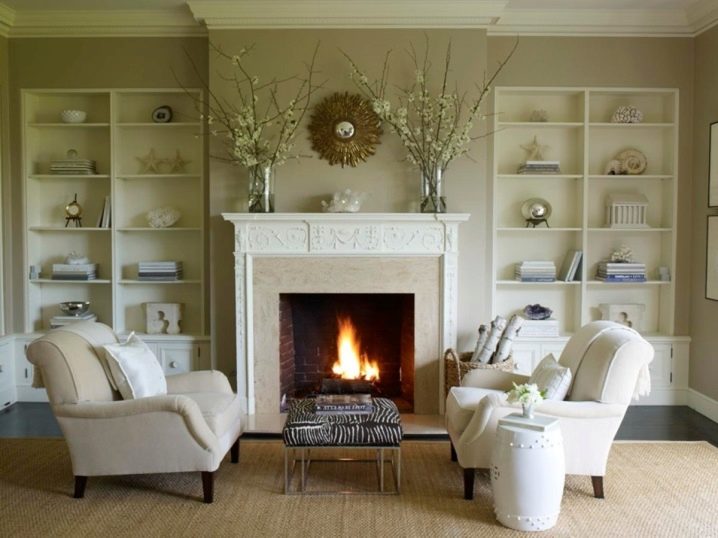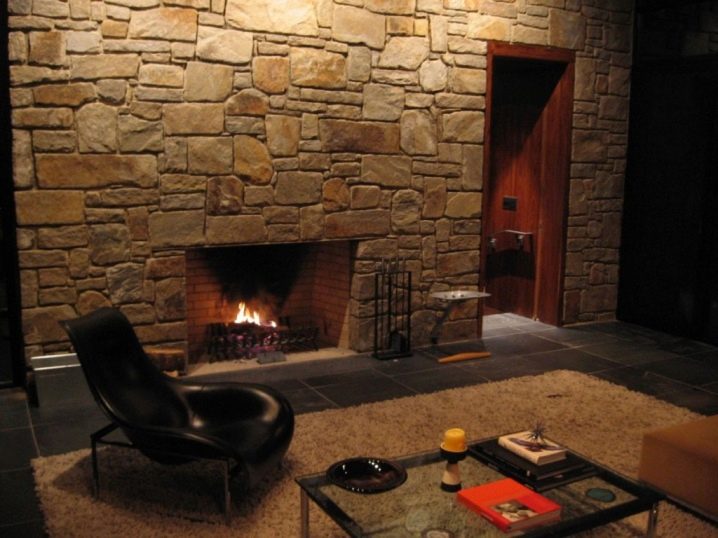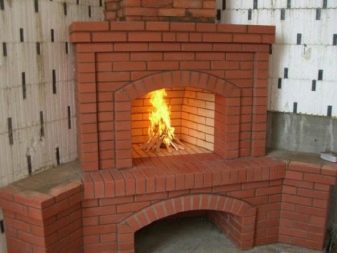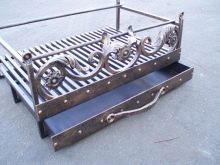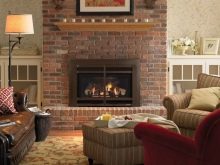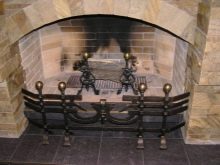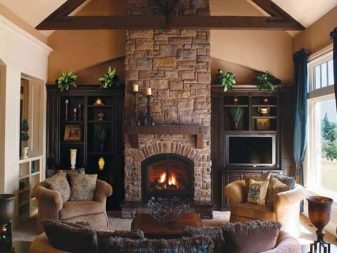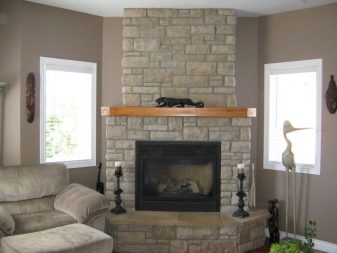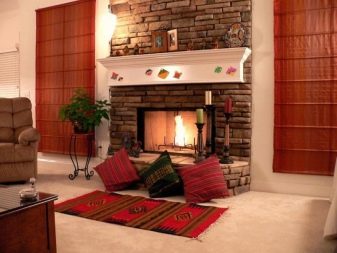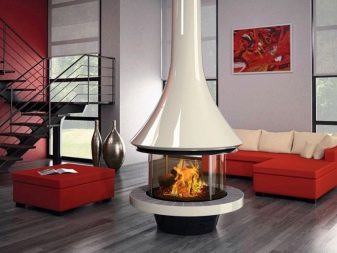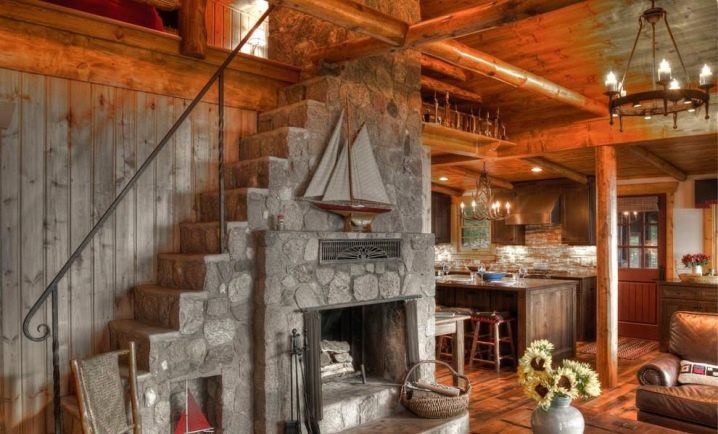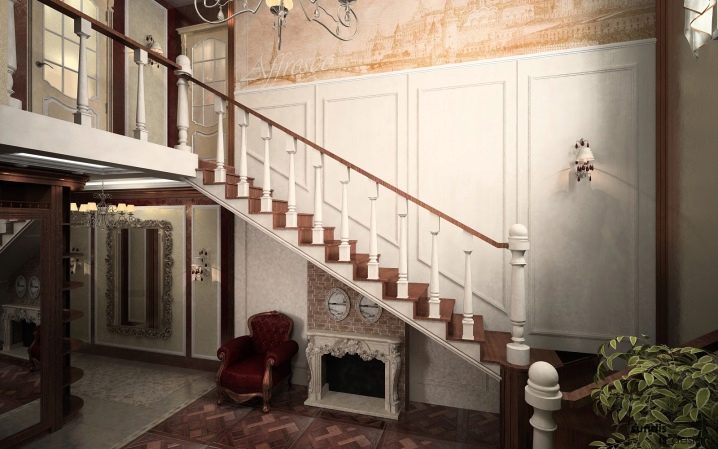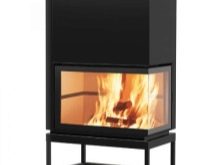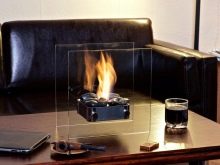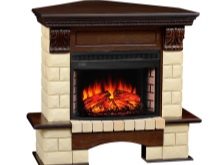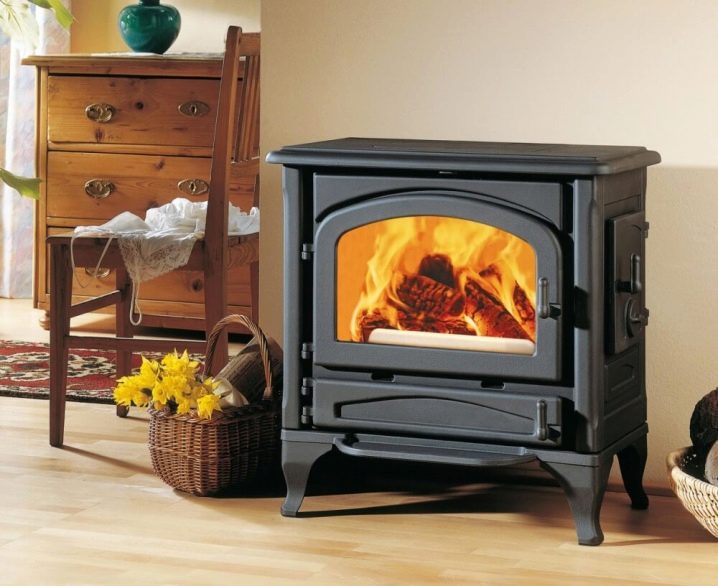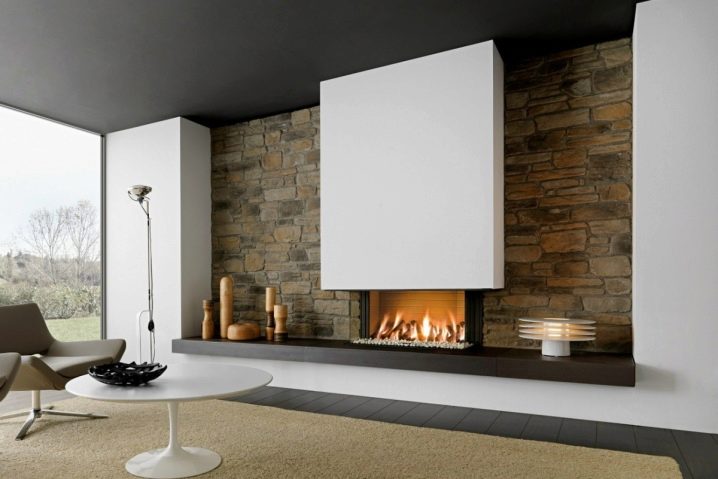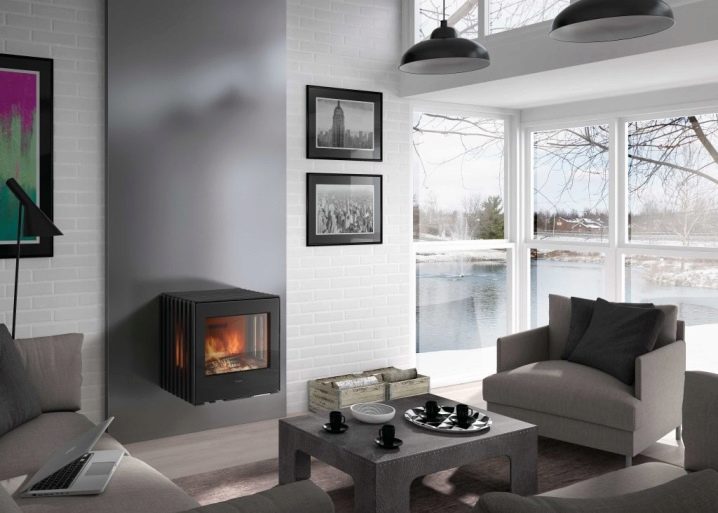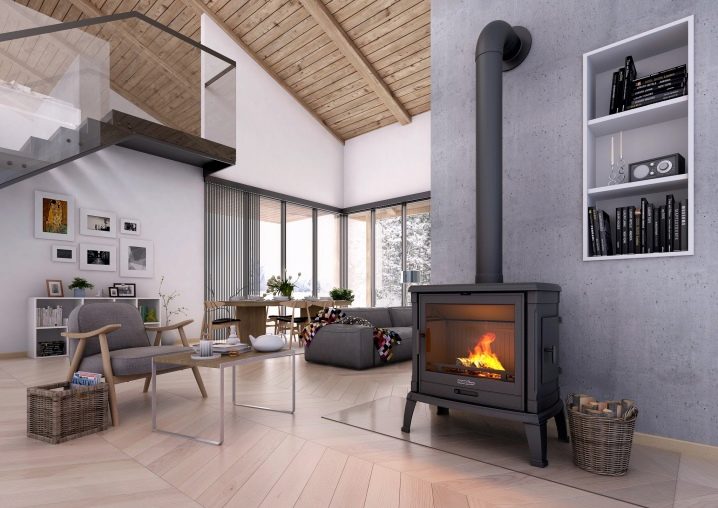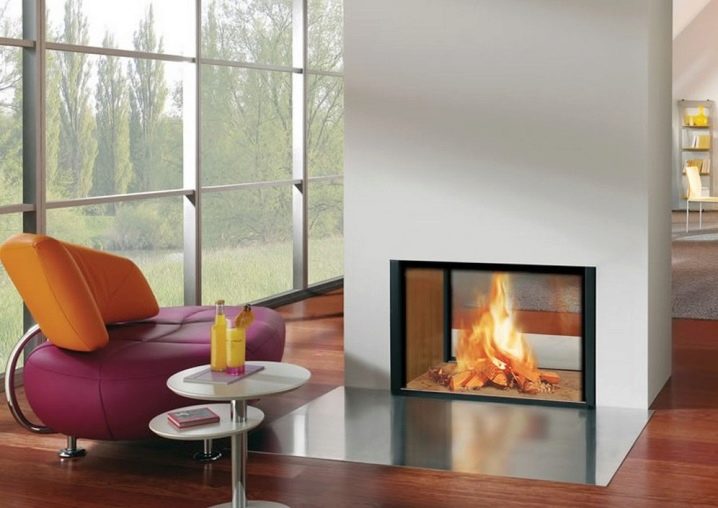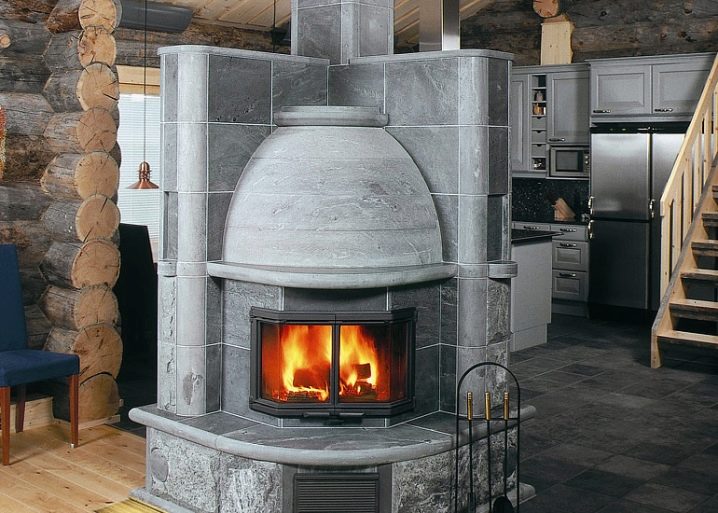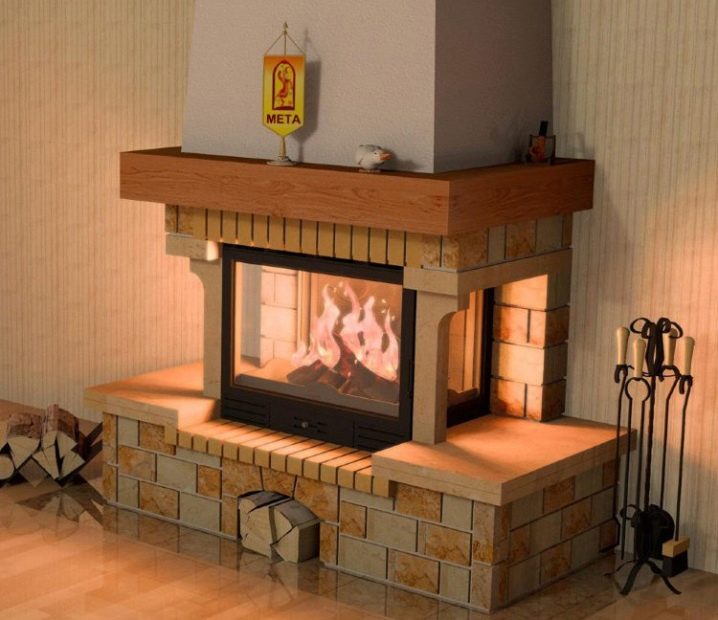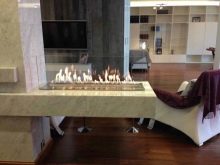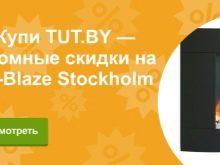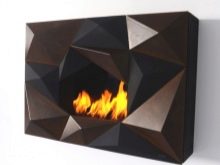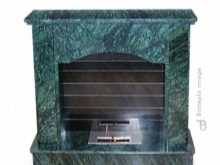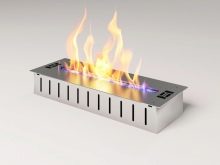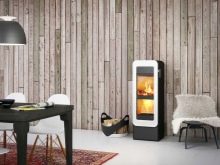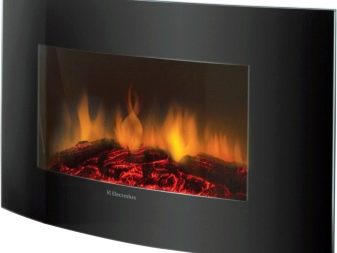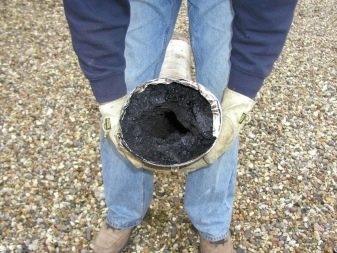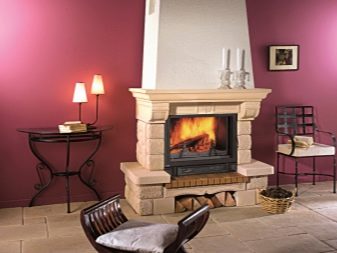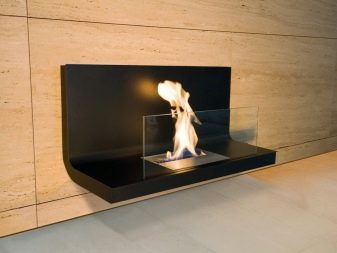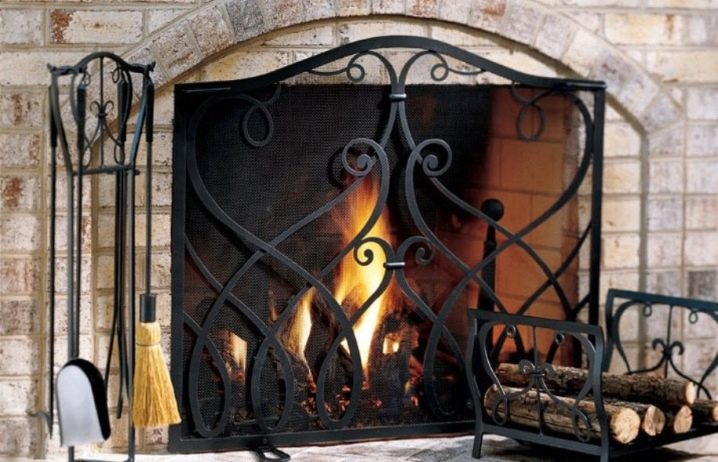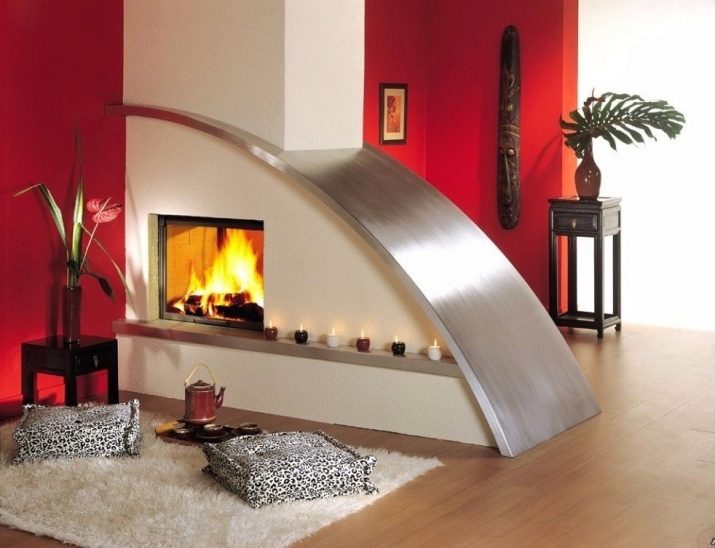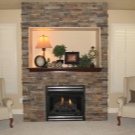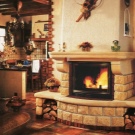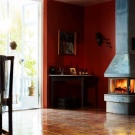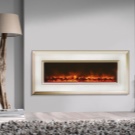Fireplaces: types and their features
Initially, the fireplaces had one function: to heat the house. Over time, their device and appearance changed. In modern society, an opinion has formed that fireplaces are rather an element of luxury than a heating system. However, using it in a house or apartment you can create a feeling of warmth and comfort, especially the market offers various models - from huge street ones to miniature ones.
Special features
Most often, a home fireplace is designed for home heating.
The standard model consists of four main elements:
- facade or portal, which is often designed in the form of the letter "P";
- a fire chamber in which fuel is burned;
- a special chamber located above the firebox, the functional responsibilities of which are to transfer smoke into the chimney. It is called a smoke box;
- chimney, which should provide draft and smoke removal.
If the fireplace is outdoor, it also performs the function of a stove, barbecue, stove or smokehouse. Therefore, several more design features are added to these elements.
Scope of application
Initially, the fireplace served only one function - heating. Now the scope of their application is extensive.
Most often, the fundamental large structures are used as a heating system in private homes. In this case, the fireplace serves as a source of thermal energy, which is transmitted through a closed water circuit to all rooms.
Small models are used to heat apartments, mansards, porches, loggias or closed balconies.
Street types of fireplaces made in the style of "hearth", barbecue or barbecue are in demand.
Fireplace designs with a stove function were loved by summer residents and residents of country cottages.
Designers everywhere use falshkaminy and biofireplaces in any interior styles.
Kinds
Manufacturers offer a wide range of models, which are classified according to different parameters.
By function
- For heating. The main function of the fireplace is to heat the room.Usually in a private house or cottage, the owners do not depend on the central heating system, so they have the opportunity to install their own. Since the fireplace can become the core of the heating circuit, and also serves as a wonderful element of the interior, its installation is in demand.
- Partial heating. In modern apartments, a real fireplace is problematic to install, its variations are more often used. On cold winter evenings, they can work for heating, and in the absence of the need for heating, perform only decorative functions. For example, electric fireplaces or installations on pellets are appropriate for use on a closed balcony or loggia.
- With cooking function. An excellent example is street models.
- The most popular are the country barbecue fireplaces. The center, as a rule, is not connected with residential buildings, it is built on a separate allocated area under a canopy. The design is necessarily equipped with a stove and grill. Often, the surrounding space includes a sink, a dressing table, shelves, and storage niches. The fireplace on the street has the main difference from the internal models: the chimneys do not close the flaps.
Models for location inside the house are in demand in the kitchen.
- Fireplace stove designed to perform two functions: heating and cooking in the oven. As a rule, the product is supplied with two fire chambers and, accordingly, a pair of chimneys. In this regard, they can be used both together and separately. The system works on wood or briquettes of sawdust, so the place near is more often equipped with a stove bench. Especially in demand garden option stove-fireplace.
- Decorative designs serve to decorate the interior. With their help, designers place accents. A fireplace can personify luxury and pomp or comfort and calm serenity. It is characteristic of many styles and is made of different materials. Specialists in interior design use not only real heating options in the form of bio- and electric fireplaces, but also fake fireplaces.
By type of fuel
Wood fireplaces
The most ancient of all existing options. For their construction they use fireproof bricks. Less common options of ceramic blocks or cast iron. The portal and the chimney are faced with different types of decoration: natural or artificial stone, brick, ceramic tile, wooden plates.
The design of the fireplace is quite complicated and has a number of subtleties that should be considered during the construction phase and during further use:
- installation technology does not allow to place such models in urban apartments;
- it is better to take into account the presence of a fireplace at the design stage of the house, since later it will be difficult to enter it already in the finished interior;
- construction takes time;
- pre-operational preparation - a long process associated with the complete drying of the entire structure;
- the chimney should be laid out by a qualified master, since in case of an error the fireplace can start to smoke inside the room. Properly assembled design will provide a good stable traction. If the chimney is too long, the firewood will burn out quickly, with a short air flow will be weak and the smoke will partially go into the room;
- the pipe during operation must be regularly cleaned;
- the space around the fireplace must be protected from fire, since live fire can present unexpected surprises;
- Experts advise to provide a safety valve for the firebox to prevent the scattering of burning coals.
Even with a large number of flaws, wood structures remain popular. The warmth of living fire and the quiet crackling of firewood create a cozy homely atmosphere.
Peat and coal
The device is similar to wood models, but there are features to use. Peat is laid in the firebox with a layer of not less than 20 cm, and coal is no more than 15 cm. For kindling of coal fuel, wood chips, paper, ignition are used. During combustion, a large amount of ash is formed, so you need to constantly clean the grate.
For even burning, air is needed, especially for coal.. To do this, it is recommended not to close the end of the blower door during ignition.
Gas
The fuel used is methane or propane-butane. Incineration does not form solid waste of burning and soot, this allows to exclude from the construction a collection of ash, a grate and to narrow the diameter of the chimney. The gas burner is located inside the firebox. Its regulation can be carried out both manually and automatically. Modern technologies make it possible to equip the entire system with monitoring sensors, which will be responsible for the supply and shutdown of gas, traction force and safety.
Experts note that due to the possibility of condensation, the chimney is better insulated and made of stainless steel. Forms and types of placement of gas structures can be any. The effect of live fire is achieved with the help of special accessories, for example, ceramic firewood.
The main advantage over wood and electric is the cost - it is lower. The advantages also include: noiselessness, the absence of sparks, controlled power of fire, low emissions of harmful substances, simplicity of design, the possibility of automation, mobility.
The disadvantages of gas-type fireplaces are also present:
- the presence of gas in the form of a gas pipeline or cylinders to be purchased;
- independent installation is impossible; a certified specialist is required to work with gas; he has permission to do so;
- to accommodate gas equipment associated with the heating circuit, the permission of the controlling authorities is required;
- gas is an explosive type of fuel, and therefore requires careful attention;
- low energy efficiency.
On pellets
Such models are usually made of cast iron or heat-resistant steel, using ceramic or glass plates as a finish.Pellets are compressed granules, the raw material for which are any combustible waste.
The advantages of this type of fireplaces are the following factors:
- The work process is almost completely automated. The heater allows you to maintain optimum temperature.
- The small size allows you to use the device in any room.
- The fuel is environmentally friendly.
- High energy efficiency. The efficiency of pellet fireplaces reaches 90%.
It is worth noting the disadvantages:
- Automation and electronic filling complex. They require competent maintenance.
- Fireplaces work on the network. They are not designed to burn another type of fuel.
- More expensive than wood counterparts.
Electric
Models work from the mains. Due to the lack of the need to burn fuel, the structure was simplified, it became easier to take care of the fireplace during operation. Now it is possible to install electric furnaces in any premises, including apartments.
Experts identify a number of advantages compared with wood and gas fireplaces:
- low cost;
- simplicity of installation and further operation;
- the presence of several modes of heating;
- environmental friendliness and the ability to create the effect of a living fire without burning fuel;
- no need to build a special chimney or other devices for removal of combustion products;
- remote control and the presence of a thermostat, in addition, you can set up air filtration, which favorably affects allergies;
- fire safety degree is comparable with any electrical household appliance.
To date, manufacturers offer a huge selection of electric fireplaces. However, it should be noted that the product rather plays a decorative role, and also partly serves as a heating device. With all the advantages described, the electric fireplace is just an imitation.
Bio or Ekokamin - a wonderful invention that allows you to enjoy the view of this fire in the absence of smoke and soot. The fuel is bioethanol, which is poured into the burner, made of metal. Since the combustion products are safe for humans, chimneys are not required. Heat transfer from bio fireplaces is excellent, but most often they are used as an element of interior decor in modern modern or high-tech styles.
When choosing ekokamina it is recommended to consider the following:
- like any product using a real fire, the design requires certain fireproof measures;
- design features depend only on the ideas of the designer;
- there is not enough power to heat the entire room.
In size
- Large. Fireplaces of huge sizes are designed to produce a large amount of heat. Therefore, it is advisable to install them in private houses with high ceilings, as well as additionally providing the core function of the entire heating system. Appropriate construction of large dimensions on the street. In this case, they are whole architectural compositions: mangal zones or barbecue.
- Little ones. Miniature models give little heat, so most often they are a decorative element of the interior.
By type of material
- Brick. For the construction of the firebox is used special refractory bricks. Exterior finish is made of ceramic facing material. It is important that the facing brick is not hollow, since it is he who accumulates and releases heat. Emptiness will cause its rapid destruction.The use of silicate material is prohibited, since when it is heated, harmful substances are released.
- Natural or artificial stone. Natural material tolerates temperature drops and does not emit toxins. Only one significant disadvantage is the high cost. It should be understood that the construction can not do without refractory bricks for the furnace. The stone is used only for cladding.
- Cast iron is used as a material for the furnace. He endures the heating temperature to 600 degrees. Experts identify two significant drawbacks - brittleness and a high coefficient of thermal expansion, which causes an increase in size when heated by up to 3 centimeters. It is excellent for non-permanent use as it warms up quickly and does not corrode.
- Steel is similar in performance to cast iron.. Difference is higher plasticity and possibility of repair.
- Ceramics in most cases serves facing material for all types of fireplaces. It is heat resistant, has high heat dissipation and long service life.Modern processing methods allow to obtain ceramic bricks, plates and other forms of decoration.
- Drywall - material for the construction of falshkamino.
For lining fireplaces use elements of stucco, plaster, ceramic tiles or tiles, as well as other decorative materials.
By location
- outdoor fireplaces are installed outdoors;
- internal structures are an element of the interior.
When possible move
- Mobile. There is the possibility of moving the fireplace from one room to another. Usually these are small constructions.
- Stationary models have a permanent foundation and have an impressive size.
By location type
- Wall mantel designs - The most common models. The peculiarity lies in its location near the wall, for which it is necessary to build heat-resistant ceilings. At the wall surface is only the back of the fireplace, the body protrudes completely. One of the advantages is the possibility of its construction in the finished interiors.
- Corner models occupy less space than the wall, because they are embedded in a corner.When designing, you can create the effect of a built-in fireplace, or you can hide just a chimney under the skin.
- Embedded Models save space in the room, because the design is almost completely hidden inside the wall. Their design is better to start at the stage of building a house, otherwise you will have to disassemble the ceiling. Models can have a different shape from the classic rectangular to round. Designers offer an unusual two-sided fireplace. It is built into the partition between the rooms so that it can be seen in both rooms.
- Island fireplaces are different from other options for an unusual design, but in terms of heat transfer significantly lose. The stand-alone design includes a platform of heat-resistant material, on which, in fact, the fire burns. Above it is installed smoke box and chimney. The dimensions of the system are rather big, so this should be taken into account before installation. One of the varieties of island fireplaces are mounted models that hang above the floor on a chimney. Experts advise not to neglect measures of fire safety and to enclose a source of fire on all sides with glass.
According to the principle of work
- Open. Heat is obtained from a burning fire. Characterized by a large loss of energy.
- Convection. The design includes a special convector-fan, which allows you to distribute thermal energy over the entire area of the room.
- Cumulative the fireplace accumulates heat and gives it away gradually. To do this, use special furnace channels or cumulative bell-shaped mass of fireclay circles. It accumulates heat energy in itself and radiates it into the surrounding space not immediately, but within a few hours.
- Combined The variant combines several types of production and distribution of energy.
By type of fireplace insert
- Open type. Fireplace open from the facade. Such options require compliance with fire safety measures. Since such furnaces need additional oxygen, good traction must be ensured. The efficiency of open fireplaces barely reaches 15%.
- Closed type. Fireplaces are represented by models with a heat exchanger with a closed heat-resistant glass or door, which increases energy efficiency up to 75%.
By type of chimney
- Of brick chimneys are built for fireplaces, the fuel for which is solid: wood, coal, peat.
- Stainless steel. The design of the stainless steel chimney is usually a typesetting, requires insulation. It is of different sections and lengths. Among the advantages should be noted lightness, low cost, ease of installation and repair of individual parts. The indoor part of the chimney must be insulated and housed in a casing to provide an aesthetically pleasing appearance.
- Using ceramics. Ceramic pipe is located inside the box and requires insulation. It is characterized by a long service life, the ability to create various forms of chimney, simplicity and a small amount of time for assembly, high efficiency, the presence of holes for preventive cleaning. The disadvantage is the high cost.
- Coaxial chimney suitable for the construction of gas fireplaces. The system consists of two pipes one in another. In the first, combustion products are discharged, in the second, air is supplied.
Types of construction
Depending on how heat is radiated, fireplaces are divided into the following types:
One-sided hearth - the simplest design, the most widespread. It implies the output of heat from the furnace to the outside through the main window of the fireplace. Inclined internal walls provide maximum heat transfer.
Two-sided fireplace has two output portals. These include corner and island models, in which two adjacent or opposite sides of the firebox are transparent. Wall options of this type are rarely released.
Experts note that when choosing the original fireplace, you should consider its shortcomings:
- The fuel in it burns faster, therefore, its consumption will increase. This also necessitates more traction in the chimney.
- Energy efficiency is lower than one-sided, because there are less internal reflective surfaces.
- The fire hazardous area in front of the fireplace increases, which must be secured against falling coal.
Trilateral fireplace to a greater extent performs a decorative function. From the side, the construction resembles an aquarium, since there is only one internal reflecting surface, the others are transparent.
The disadvantages of bilateral fireplaces in this case are more pronounced:
- thermal insulation of the floor is required on three sides;
- low energy efficiency.
Heat is supplied in three directions, but the main exit is the central one, which is opposite the reflecting internal wall.
Materials
For the construction of this stationary fireplace, the following materials are used:
- foundation - rubble stone, red brick, concrete mix (crushed stone, sand, broken brick, cement), reinforcing mesh;
- firebox - chamotte refractory brick, cast iron or heat-resistant steel;
- chimney and insulation box around the firebox - brick, foam block, gas block, concrete slabs.
Decoration Materials
From their choice depends on the life of the fireplace. The most durable are red or refractory bricks, granite or marble, sandstone.
Experts note that when choosing a brick, it is necessary to check everyone for cracks, chips and internal cavities. Each of them should be a full-bodied, high-quality, uniform orange-red color, when struck, make a clear, clear sound.
If a refractory option was chosen for construction, then the clay should match it.As a rule, a cement mortar is used for the binder, to which ordinary red clay is added. Professionals believe the best blue Cambrianbut it is more expensive.
If the laying was carried out with high-quality brick, then lining is not required. In the case of finishing, you should choose high-quality heat-resistant materials.
A natural stone - one of the most resistant materials used since ancient times. However, its essential weight should be taken into account.
Marble - this is a decorative stone. Manufacturers offer a wide variety of colors and patterns. Consider the high weight of the marble plates and the high cost. It is suitable for finishing stoves and fireplaces, since it has the necessary qualities for this: simple in processing, fireproof, durable and heat-resistant. Experts warn that the material reacts negatively to the effects of abrasives, so you should avoid using them when washing.
Granite stronger and cheaper than marble. Plates from granite are practical, durable and decorative. The material is easy to process, differs in a variety of shades and textures.
Shellfish has a beautiful shape and porous composition.It is not resistant to mechanical stress, but remarkably warms the room.
Sandstone - strong enough material. It is suitable for both construction and facing works. The aesthetically pleasing appearance adds a rustic touch to the room.
Onyx refers to the semi-precious stones, therefore, at a cost not available to all. Onyx plates, as a rule, make very thin and veneer them with only separate parts of the fireplace. It is believed that the stone has positive energy, protects against the evil eye and heals from diseases.
Talkohlorit also called soapstone. It is characteristic of him to accumulate heat and slowly radiate it into the surrounding space. It is believed that it has healing properties. Shades are usually green, gray and bluish scale. Since the stone has minimal thermal expansion and high heat capacity, soapstone plates can be installed near a fire. The heated surface does not burn in contact with skin.
Talcomagnesite - material of volcanic origin. By analogy with talcochlorite, it accumulates heat and gradually releases it.The unique properties of talc-magnesite are widely used in the finishing of fireplaces and stoves.
Artificial stone and ceramic tiles, in contrast to the natural rock, gain by weight. As a rule, they are lighter. Experts warn that the use of ordinary tiles when finishing the fireplace is impossible. It is necessary to choose heat-resistant modifications.
Porcelain stoneware - a modern material that has excellent characteristics, suitable for working with hot surfaces. Ceramic granite does not burn, is easy to install, heat resistant and moisture resistant. For fixing the plates used special glue.
Designers appreciated the possibility of porcelain stoneware to imitate various materials, including natural rock. Thanks to him, it is possible at less cost to get a great look of the fireplace.
Clinker tiles obtained by firing in a closed furnace. It is the most durable ceramic tile, additionally possessing moisture resistance, fire safety, heat resistance and a long life cycle.
Majolica - small ceramic glazed tiles obtained by pressing.For the production of using bright colored clay. The disadvantage is the fear of high humidity.
Terracotta - unglazed tiles of a more dense structure, unlike majolica.
Tiles have long been used for lining furnaces. Ceramics is a tile, which on the one hand is covered with bright patterns and glaze, and on the other - tiller for ease of installation. The painting is done by hand, so the cost of tiles exceeds all types of cladding material.
Brick finishing differs from construction and fire-resistant according to the technical characteristics. The main thing when facing - accurate laying, the ideal form without flaws and even identical color.
DrywallAs a rule, used for the construction of falshkamino. In addition, HL create an insulating housing for electric fireplaces or chimneys. It is recommended to use heat-resistant variations in such cases.
The main advantage of drywall is the ability to create with it any form. To install it, it is necessary to erect a frame, for which a metal or wooden profile is used.
If wood is selected for the fireplace, then you should choose special types of wood that are resistant to high temperatures. These include oak, walnut and mahogany. Before work, the material is treated with special flame retardant solutions. Valuable wood is expensive, but also looks accordingly.
Glass it is often used not as a lining, but as a heat shield. The walls of biofireplaces and the front panels of electric fireplaces are also made of heat-resistant glass.
Plaster - the cheapest and long-used finish option. She has a short lifespan because it bursts and cracks under the influence of high temperature. But due to the low cost, it is used in villages and in garden houses for finishing fireplaces quite often. Modern technology has improved the composition, which contributed to the emergence of heat-resistant mixtures.
Cast iron used for decoration is extremely rare. As a rule, it is made from the furnace, as well as forged grilles and dampers.
Steel decor occurs infrequently. Typically, heat-resistant steel is used for grates, protective shields and doors. Stainless steel pipe is used as a chimney.Modern composite metals made it possible to create interesting models of fireplaces completely made of iron. The most popular variations on electricity.
Heating fireplace designs when choosing require careful attention to fire safety techniques.
They must be heat-resistant, non-flammable, heat-resistant, not emit toxic harmful substances when heated, have a high thermal conductivity.
For the manufacture of falshkamina used wood, polyurethane, foam plates, sheets of plywood or gypsum board. Since these models perform only a decorative function and are not associated with heating, there are no strict requirements for the choice of materials.
Dimensions
In size, fireplaces can be divided into large, medium and miniature.
Huge chimney designs are intended for receiving a large amount of heat. As a rule, they have an impressive weight and are installed on the foundation. More often they are built on the first floors of private houses with high ceilings. Additionally, such a fireplace serves as the central core of the entire heating system of the cottage. Appropriate large mantels on the street. In this case, they should not be associated with a residential area and are usually architectural compositions in the form of mangal zones or barbecue.
Fireplaces that are installed on the upper floors and in apartments are not huge. Their dimensions are comparable to the size of the room and the ability of floors to withstand their weight. It is possible to carry to them a fireplace on pellets, gas or electrofireplaces.
Models of small size give little heat therefore, they most often serve as decor. As an example, fit bio and electric fireplaces.
Fuel
The type of fuel depends on the design of the fireplace. The main species include the following:
Firewood
Wood has always been used for heating hearth. You can use any type of tree species. However, some of them burn better, others worse.
Experts do not advise to heat fireplaces with coniferous wood, because after combustion a large amount of soot is formed, which contributes to clogging up the chimney.
In addition, resinous logs crack and scatter burning particles, which is fraught with fire.
Birch is characterized by excellent heat dissipation.. It, when burned, releases the greatest amount of energy compared to other breeds.
Experts warn that birch firewood also forms a lot of soot on the chimney and the walls of the furnace.
Alder and Aspen it is inherent to burn soot that has accumulated in the fireplace.
Coal
For kindling used two types of coal: brown and stone. This type of fuel is quite efficient, but it should be borne in mind that in the process of burning small solid waste in the form of ash is formed, which must be regularly cleaned. In addition, the fireplaces on the corner is recommended to equip the grate and a blower door.
Peat
The briquette variant is more often used, however there is a lumpy one. It is advisable to use it in the event that peat extraction is carried out near the area of residence.
When choosing this type of fuel, it should be taken into account that a lot of ash is formed during combustion and sour smell is felt.
Briquettes of sawdust or wood shavings
By calorific value, they are close to coal. The best use is considered to be closed type fireplaces, since the briquettes burn out too quickly when the firebox is open.
Pellets
Fuel in the form of pellets, for the production of which various waste products are used.
As a rule, they are divided into three groups:
- Industrial. Granules of this class have an increased percentage of ash, since a large amount of wood bark gets into the mixture. This leads to frequent cleaning of the fireplace, and with inadequate care and to its breakage.
- Agropellet is a product of agricultural waste processing (sunflower husk, straw). Incineration also produces a lot of ash. However, their low cost attracts.
- White pellets considered a premium product. The percentage of ash content is about 0.5%. Equipment does not need to be constantly cleaned. The downside is the high cost compared to the first two varieties.
Gas
Two types of fireplace fuel are used: methane and propane-butane. Gas is appropriate if there is a centralized system, otherwise it is necessary to use the balloon version.
Ethanol
Used in biofireplaces. Alcohol fuel is expensive, so designs are mainly used for decorative purposes.
Electricity
Such fireplaces are safer, less costly, because electricity is now everywhere. Sometimes oil is used to produce soft heat in electric fireplaces.radiator.
Special technical oil is able to accumulate heat and gradually give it to the environment.
Style and design
In terms of architecture, fireplaces belong to several basic styles, each of which has its own characteristics.
Classic characterized by U-shaped portals and massiveness. As a rule, the construction is built into the wall, for its design columns, bas-reliefs, and stucco moldings are used. The veneer is marble, malachite or fine wood.
To enhance the effect, to bring in the feel of old England, designers use stylish wrought iron parts to frame a large portal. Gratings or fences are made of them.
Country Style ModelsAs a rule, they are distinguished by large sizes and have a wide lower base, which gives the whole structure a resemblance to the letter “D”. Bottom usually have a place to store firewood. Since the style is associated with the village, the materials for its construction are simple.
Porous stones that retain heat, such as sandstone or shell rock, are used as raw materials. The lining of the chimney is most often performed with gypsum or bricks.
Art Nouveau design similar to the classic, but unlike it, more minimalist and straightforward. The fireplace does not look massive, but creates a feeling of lightness, even if it occupies floor-to-ceiling space.
Design solutions in a rectangular or semicircular form are designed to ergonomically fit products into the living space.
High tech - modern style in the interior, which involves the use of new materials and advanced technologies. Such variants of fireplaces differ not only in an unusual shape, but also in various combinations of refractory materials: glass, fireclay, concrete, periclase.
Experts warn that an unusual design can be an excellent decorative element of the interior, but it also sometimes impairs the thermal efficiency of the model.
Provence - French country style interior, which does not imply luxury and pretentiousness. All the details should bring notes of calm elegance and casual modesty. Chimney U-shaped portal is better to perform from wood or from a simple stone.
Finishing should include only natural materials: ceramics, stone, wood. For protection, sometimes used forged screens.
Pastel shades with the effect of antiquity will give a light charm.
Perfect place for the hearth in the spirit of the chalet is a country house, since it must be functional and serve for heating. According to the type of location wall construction. For the construction of simple rocks are used: marble, granite. Since the fireplace is erected manually, the laying itself is the decor.
The style was formed on the interior of the shepherds and hunters who lived in the mountains, therefore, the decorative elements should correspond to this.
Weapons, horns, animal figurines, clay vases, tree cuts, unusual compositions of roots or branches, dry bouquets of herbs will be appropriate for decorating the portal and chimney.
Ethno style implies a variety of trends depending on the traditions of the ethnic group. For such a design, you should study in detail the history of the people, the culture, and the features of decorative decoration.
Where to place?
If the location of the fireplace is designed at the stage of building a house, then the following points should be considered:
- a fireplace at the outer wall requires high-quality insulation of the chimney;
- it is better to choose a place near the capital inner wall, this will help prevent the cost of insulation;
- It is not recommended to have a fireplace in front of the windows and next to the door, because drafts will disrupt the functioning of the system;
- Portal window should be directed to the center of the room for good heating;
- to maintain an optimal level of operation of the heating system, it is necessary to provide a cast-iron or steel grate;
- it is better to place the fireplace-stove in the center of the room - in this case it can be so demarcated that the stove will be in the kitchen, and the fireplace in the recreation area;
- near the fireplace, a space free of things should be arranged according to safety precautions; the floor should be fire resistant.
Otherwise, the location of the fireplace design depends on the wishes of the customer and is wall, corner, built-in or insular.
Designers suggest using the space under the stairs to lay out the fireplace.
But experts warn that the installation of a real high-grade fireplace in this case is ineffective, since there are a number of adverse factors:
- installation requires time and money;
- the construction of the chimney is the most difficult task in this case;
- It is necessary to think over and calculate all the parameters so that the steps do not overheat.
Such models are mostly more decorative than heating.
Manufacturers
The modern market offers a large number of heating accessories. In particular, fireplace inserts, bio and electric fireplaces.
Furnace chambers are made of cast iron, heat-resistant steel or ceramics. Their most famous manufacturers are the following brands:
- Austroflamm (Austria). The company produces not only fireboxes, but also fireplace stoves, which are characterized by high power with minimal fuel consumption. Users note a reduced amount of emissions from combustion, a self-cleaning system of fireplace glasses, control automatics, availability of a guarantee. The manufacturer uses the latest technology, so that the model range is replete with a variety of shapes, designs, sizes. Efficiency of 85%.
- Axis (France). The manufacturer produces a large range of fireplace inserts, each model is different designer taste and originality. One of the advantages is the system of complete combustion of fuel.
- Hergom (Spain). The products combine many advantages, including quality, reliability, secondary afterburning of fuel, which increases the energy efficiency of the system.
- NordFlam (Poland). Fire chambers are made of high quality cast iron. Production differs in ergonomics, small weight, price availability. In addition, the distinctive features are high efficiency - up to 72%, a monolithic smoke box, which is a unique in-house development, protection from the release of gases.
- Schmid, Spartherm (Germany). Fireplace inserts of the German Spartherm brand are elite models known worldwide for their impeccable quality, modern design and environmental friendliness. The equipment works on gas or wood logs. Schmid products are known not only in Europe, but also in Russia. Heating systems are available in different styles from classic to studio models.
- Nunnauuni, Tulikivi, Kastor, Helo, Harvia and others (Finland). Finnish fireplaces have established themselves in the domestic and foreign markets as highly economical and reliable. Many of them are equipped with technological innovations. Nunnauuni offers high-power fireplaces lined with soap powder, which increases the energy efficiency of the device. Various sensors allow you to adjust the amount of fuel. The company Tulikivi has a production for the processing of rocks, so its fireplaces are mainly lined with natural stone. In addition to fireplaces, in the product line there are more than a thousand options for fireplace stoves.Their uniqueness is that they are able to work up to two days from the moment of the last fueling. Brands Kastor and Helo in 2009 merged into a single company that produces two trademarks. It can be said that Helo is a cheaper equivalent of Kastor, although the quality in both cases remains unchanged.
- Meta Group (Russia-Belarus). Production lines operate in both countries. The main distinguishing characteristics of the product are its versatility, practicality and optimal price.
If we consider the producers of bio and electric fireplaces, then there are many of them in all countries of the world:
- Decoflame (Denmark) offers devices that are distinguished by safety, European quality and interesting design;
- Bio-Blaze (Holland) lets out mobile biofireplaces of the original form;
- GlammFire (Portugal) - luxury chimney designs of this brand are presented in different versions, from floor to suspended;
- BioTeplo (France) uses for finishing devices a variety of finishing materials, which allows you to turn biofireplaces into unique decorative elements of the interior;
- EcoLife (Russia). Production is located in Novosibirsk.Bio-devices are simple, reliable and, according to consumer reviews, cheaper than their foreign counterparts.
- Bionicfire (Russia) creates exclusive models according to customer drawings.
There are also favorites in the electric fireplaces market:
- Electrolux (Sweden) - the most famous brand for the manufacture of household appliances. The product range is unusually wide. Experience in the production of colossal. Fireplace safety is impeccable.
- RealFlame (Russia) - A worthy competitor in the field of fireplace technologies. More than twenty years on the market. Many leading European firms have chosen the company as an official distributor. As shortcomings noted complex pricing.
Tips
If a heating fireplace was installed at home, then for its good work without failures it is recommended to consider the following expert advice:
- when installing a stainless steel chimney, it is imperative to provide for its thermal insulation in order to avoid energy losses;
- the chimney requires regular cleaning, and in order to simplify this process, when building a fireplace in the smoke channel, you should take care of the presence of additional cleaning hatches;
- most fireproof closed fireplaces, and for open fireplaces it is recommended to provide a fence in the form of protective screens;
- when installing a fireplace structure, it is necessary to calculate in advance the degree of possible loads on the floor so that the floor does not collapse later;
- before kindling the fireplace, it is better to ventilate the room and provide fresh air to the room;
- between the firebox and fire-resistant wall must be at least 10 centimeters;
- It is recommended to make a double-sided casing around the fireplace insert out of fireproof heat-resistant materials;
- the area in front of the fireplace portal must comply with fire safety requirements: there are no flammable things in the immediate vicinity, the floor is covered with non-combustible material, a sheet of metal or other refractory material up to 50 cm wide 20 cm longer than the fire chamber is located under the fire door;
- next to the fireplace must be a set of necessary tools: a poker, a scoop for ash, brushes for cleaning soot.
Beautiful examples in the interior
Fireplaces - unusual and original interior elements.They can express a variety of designer colors - from palace luxury to rustic details. Fireplaces perfectly fit into the modern interiors of apartments, office space and private cottages.
See the following video for a master class on laying a corner fireplace.
